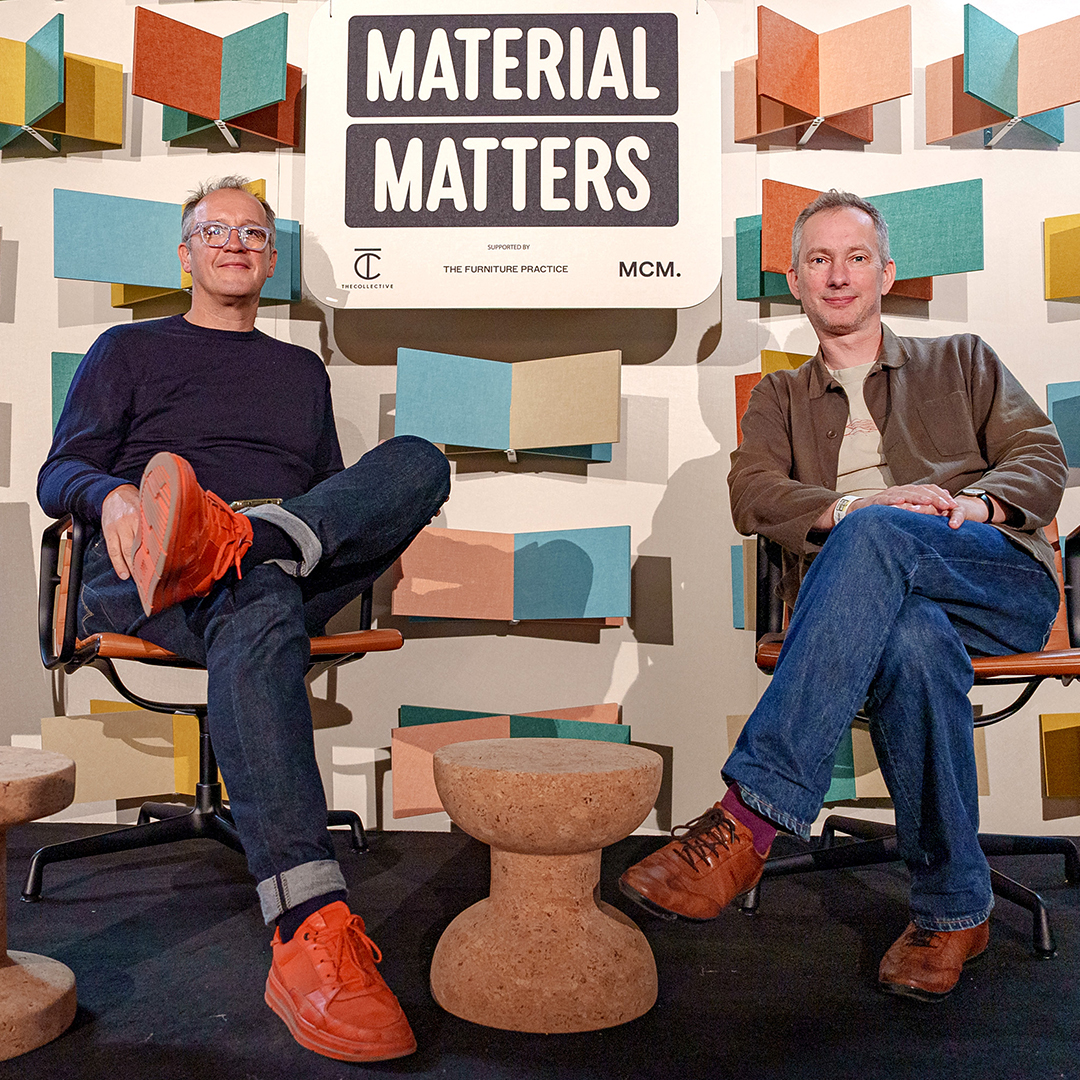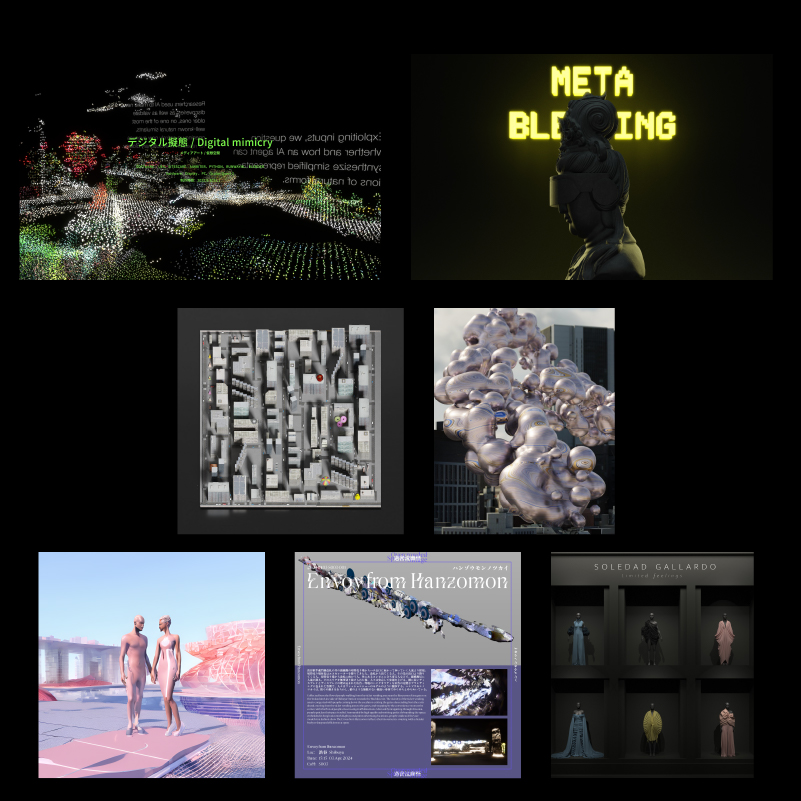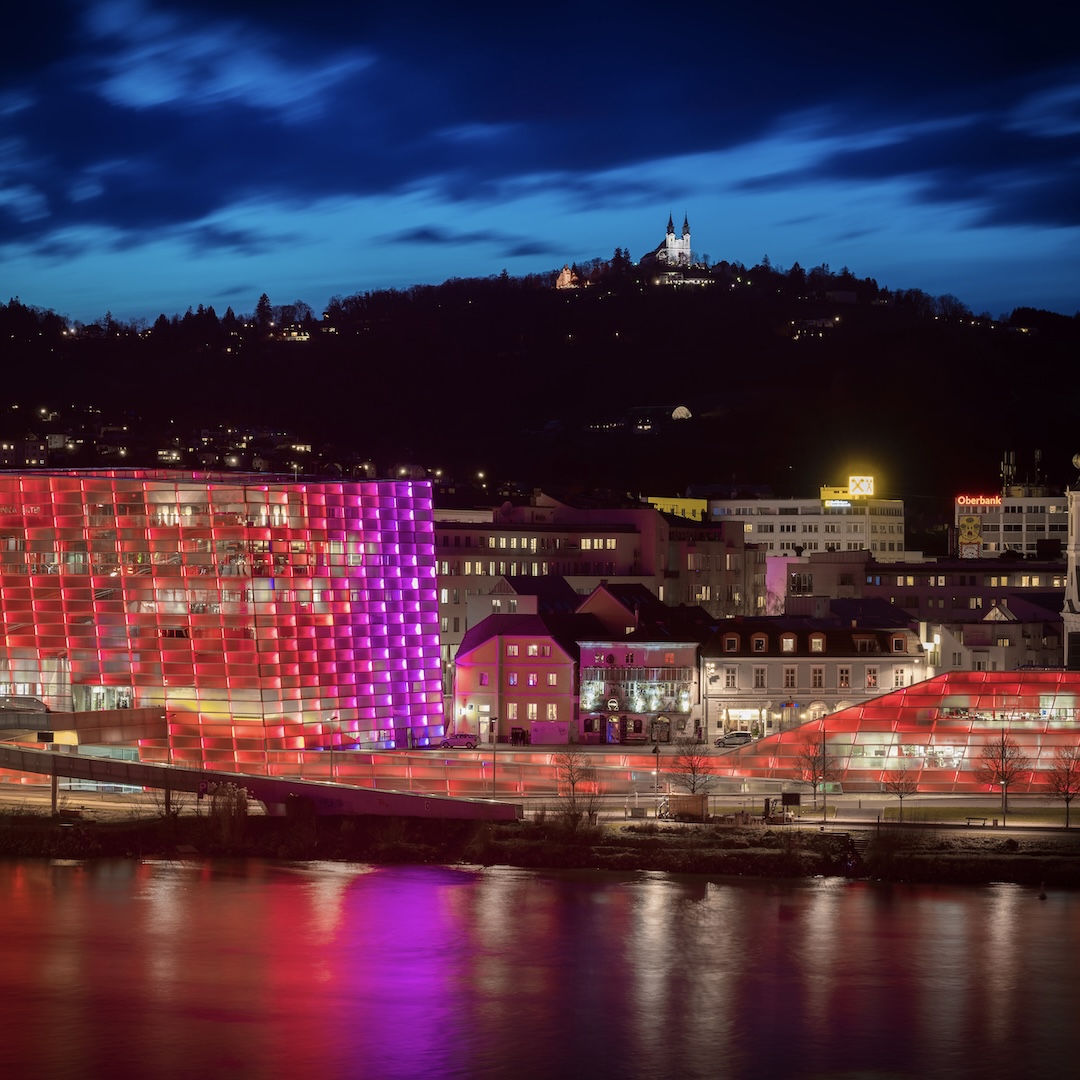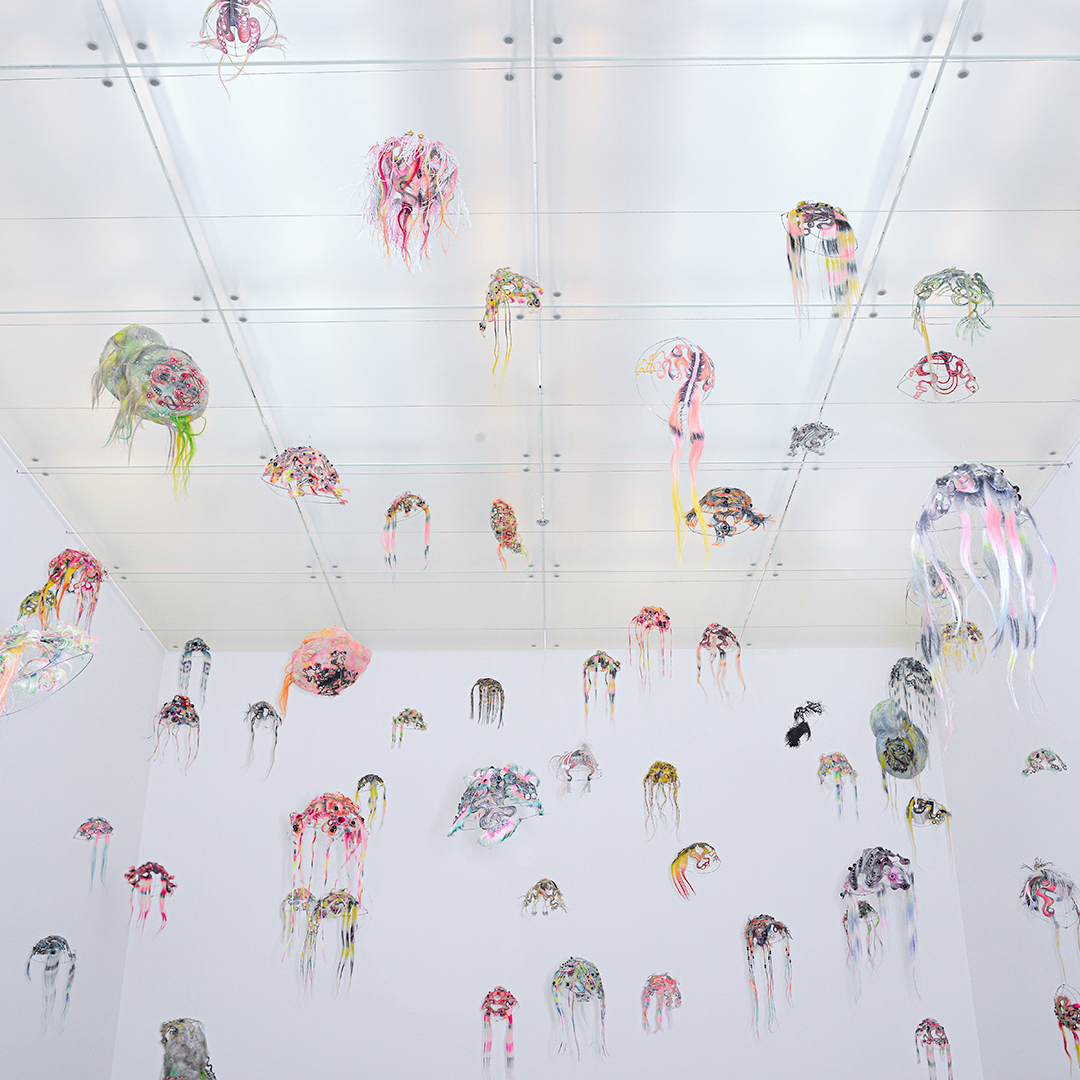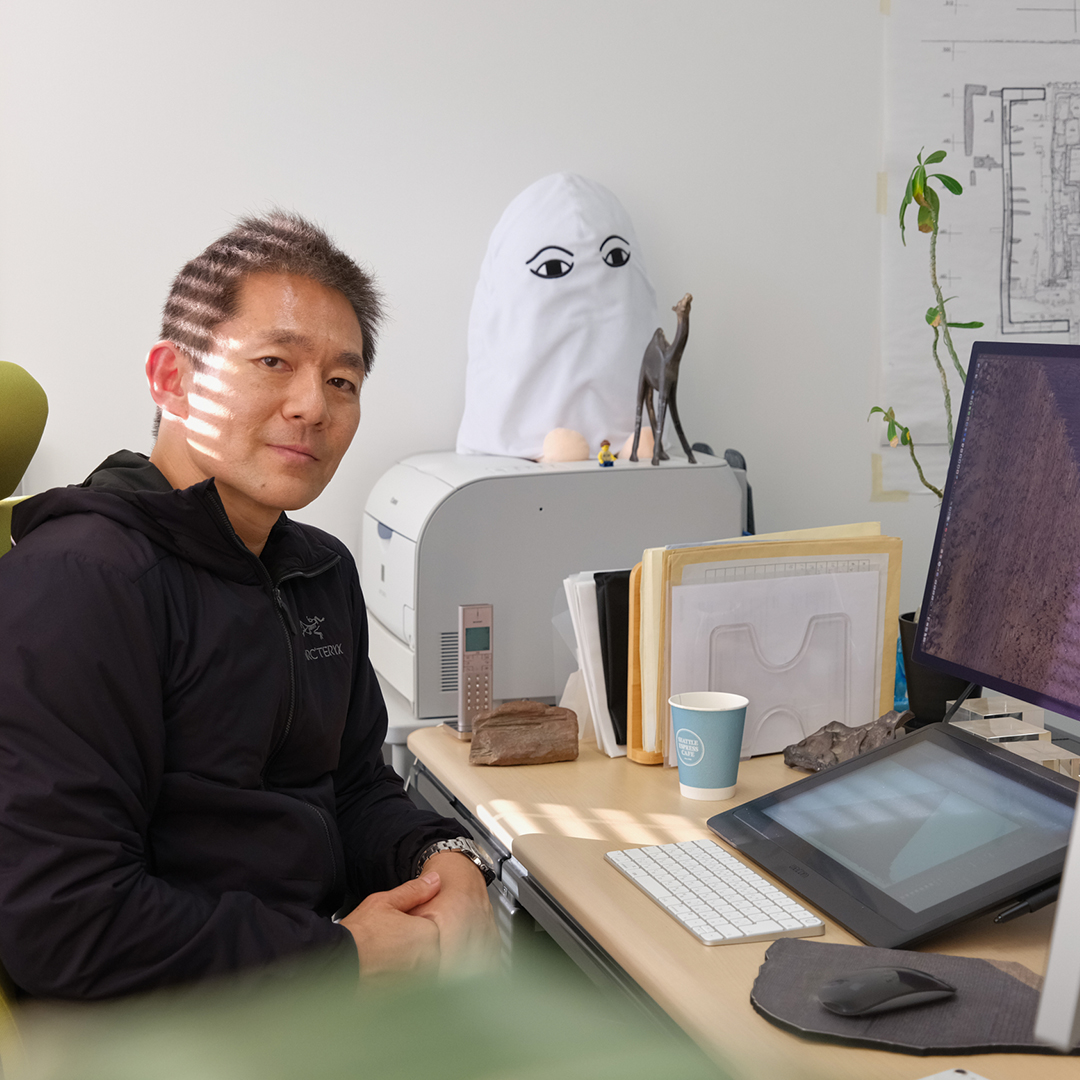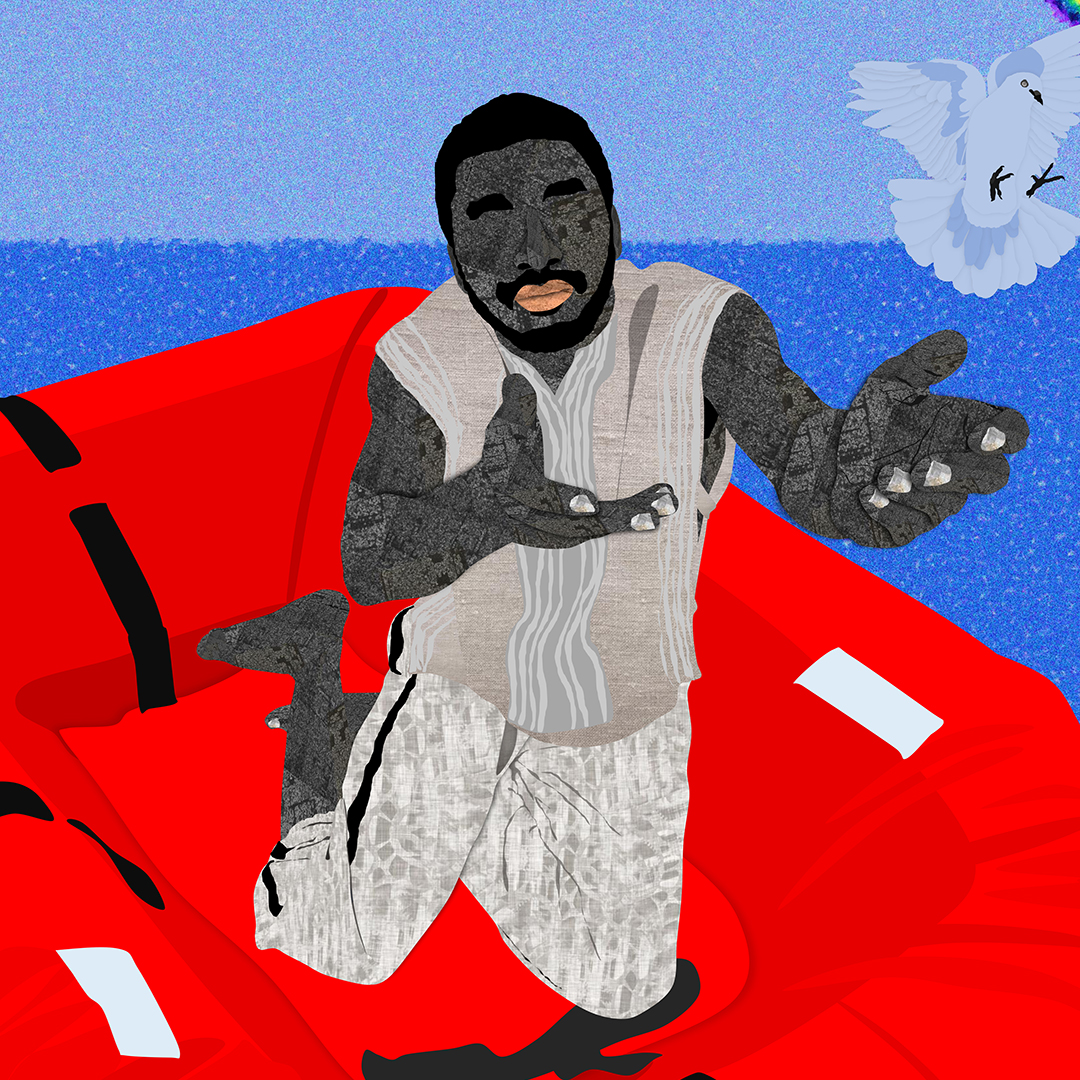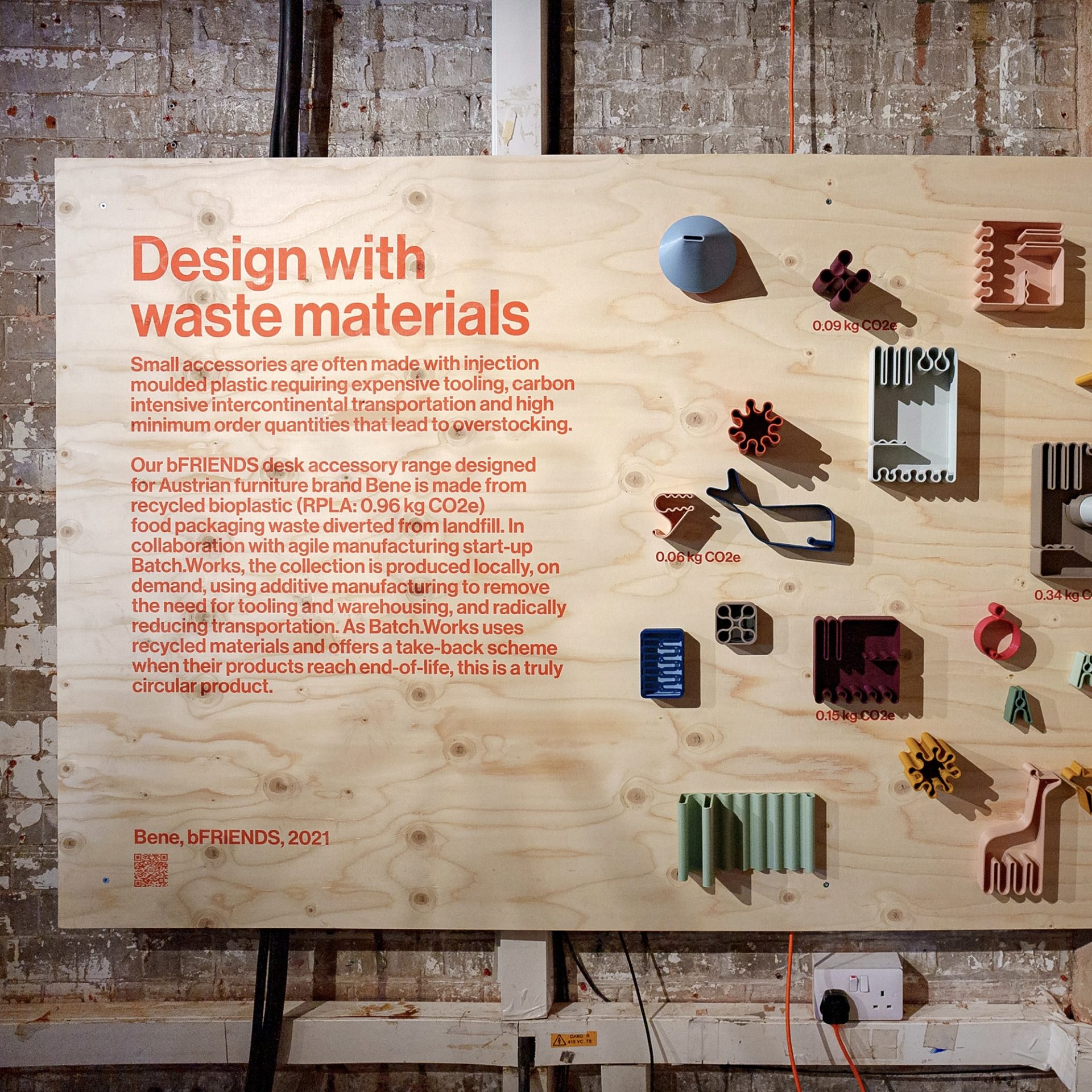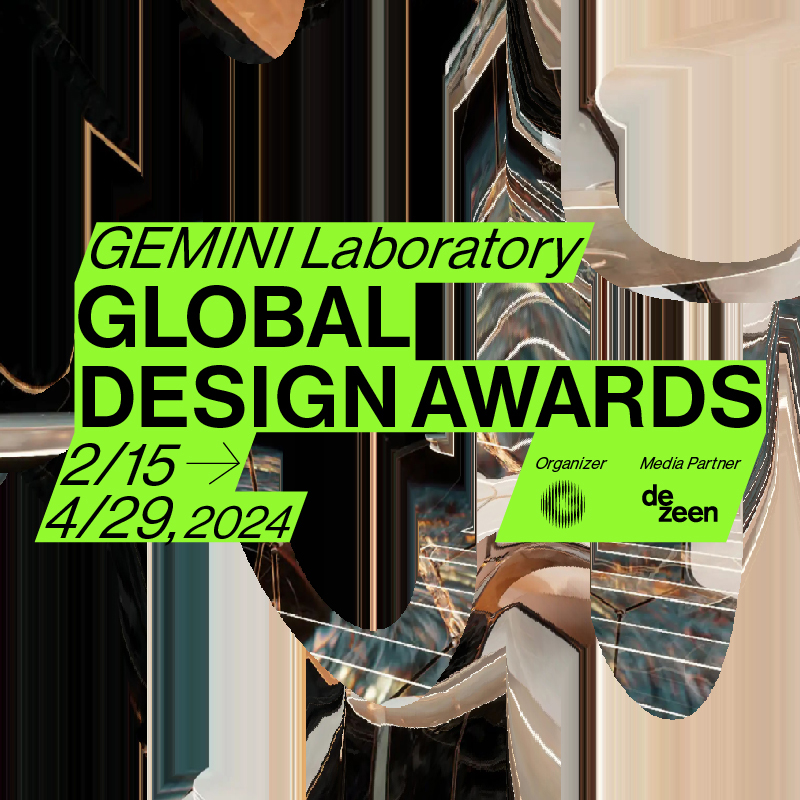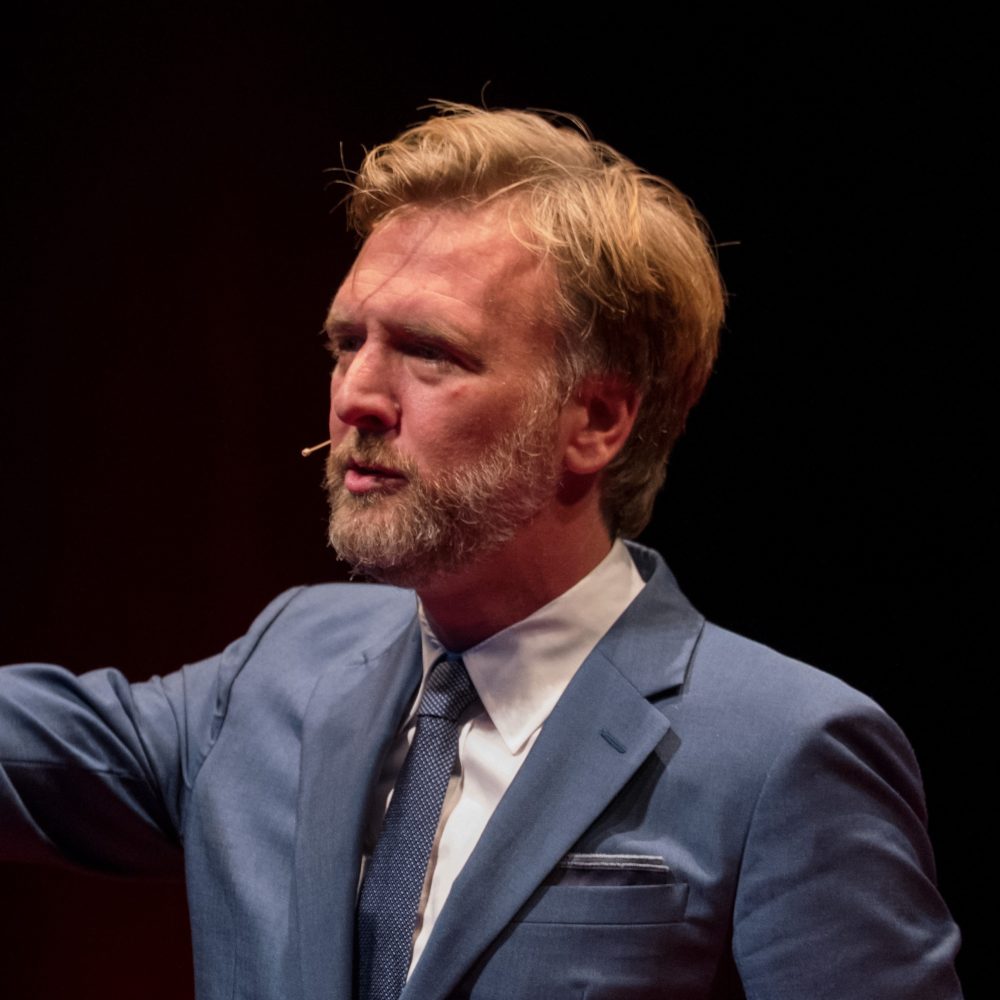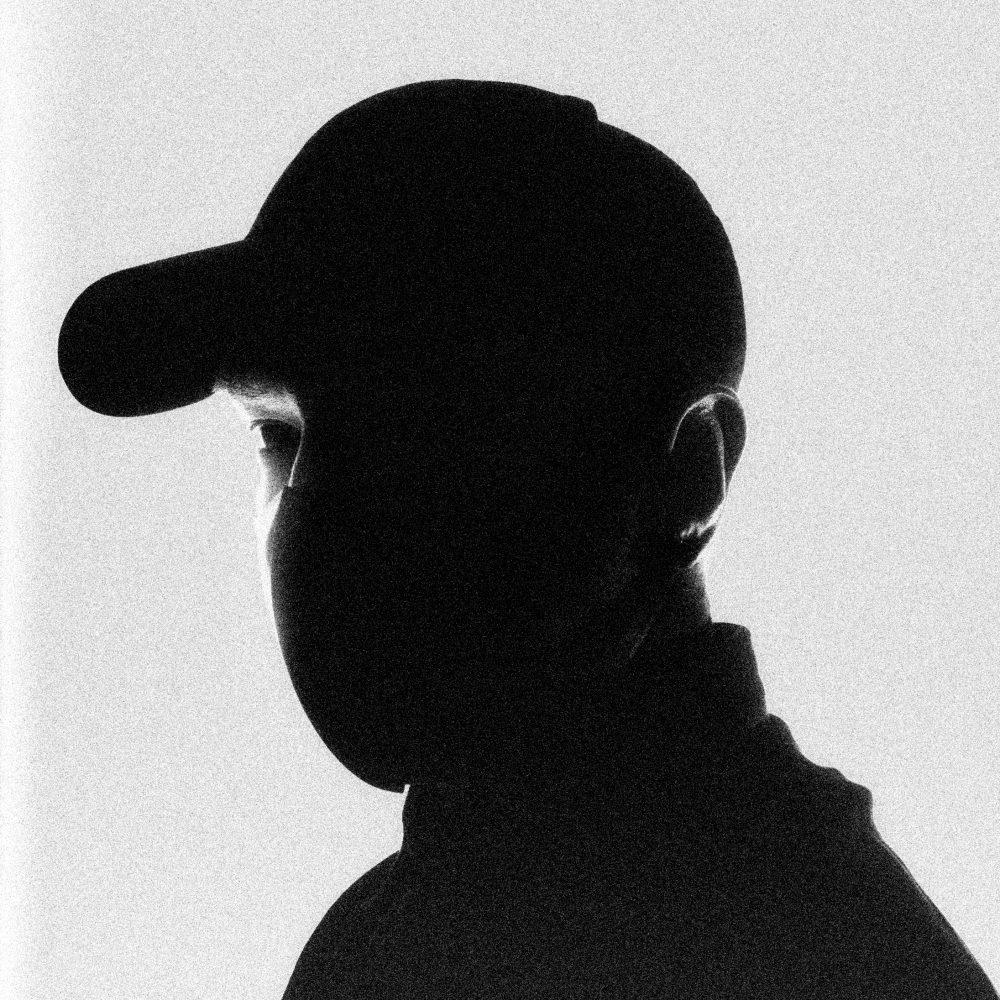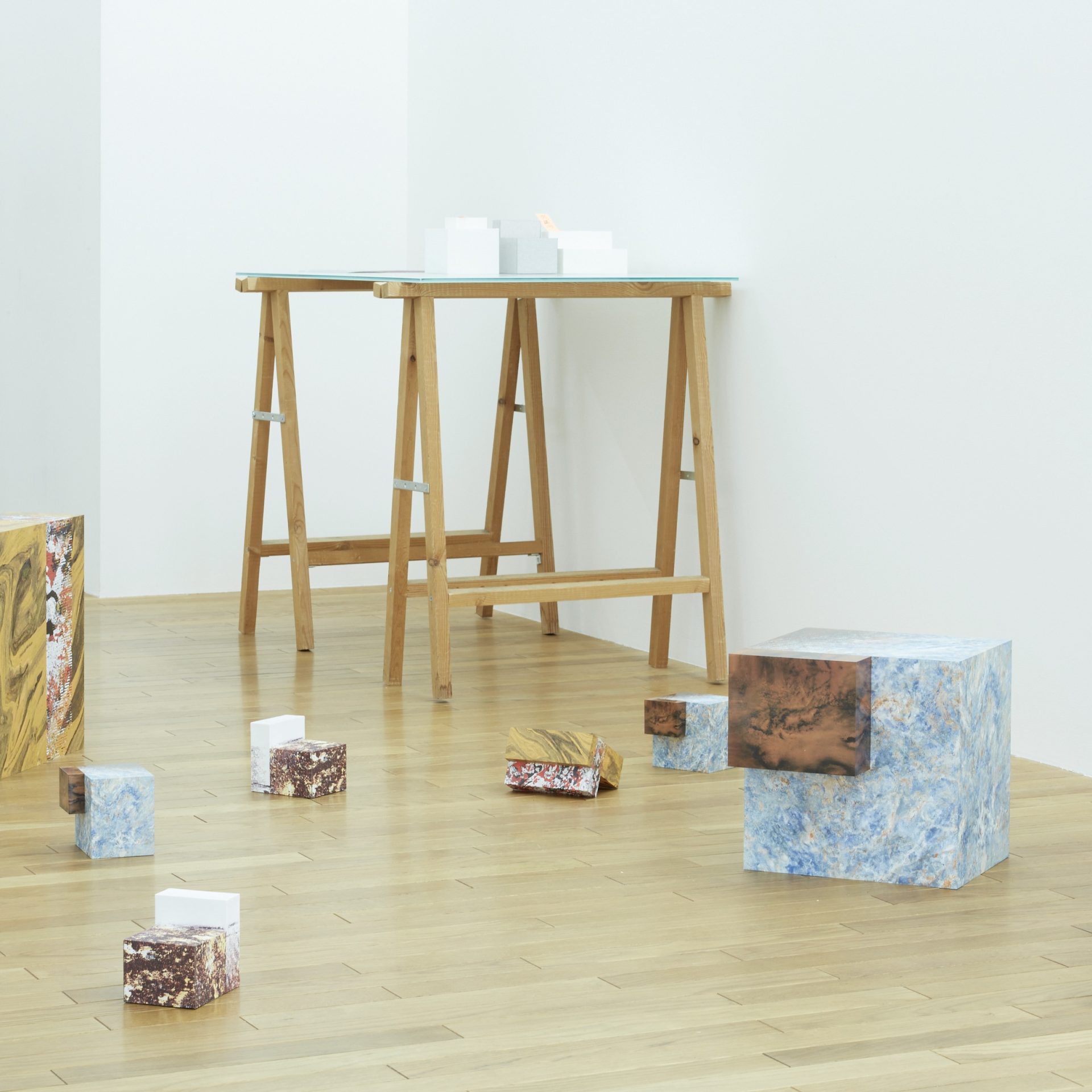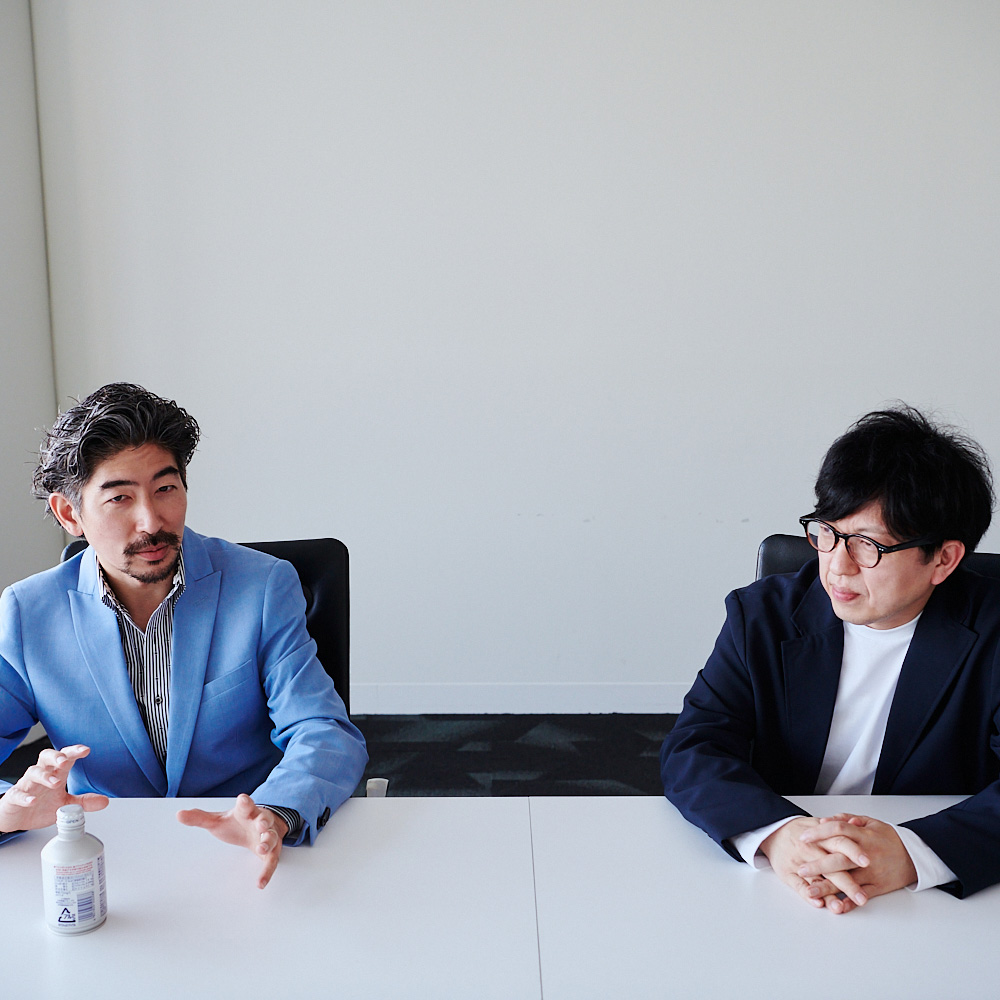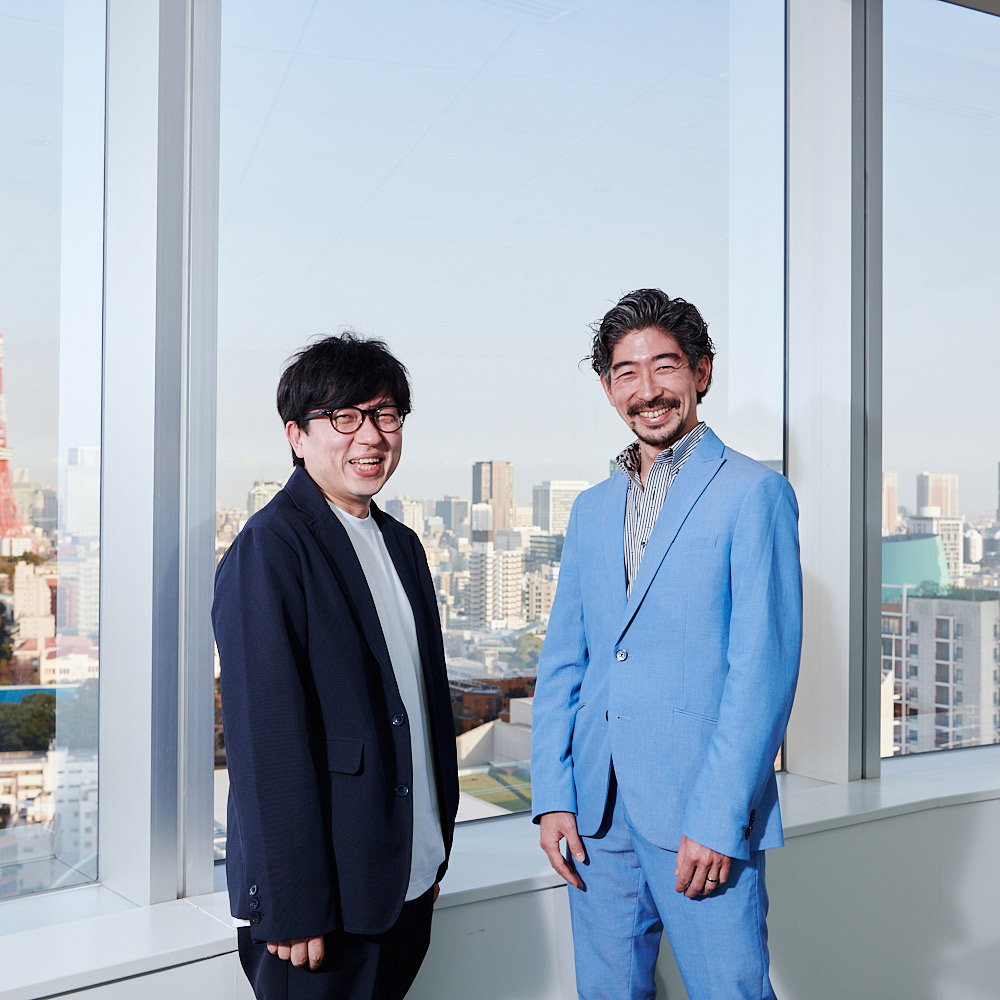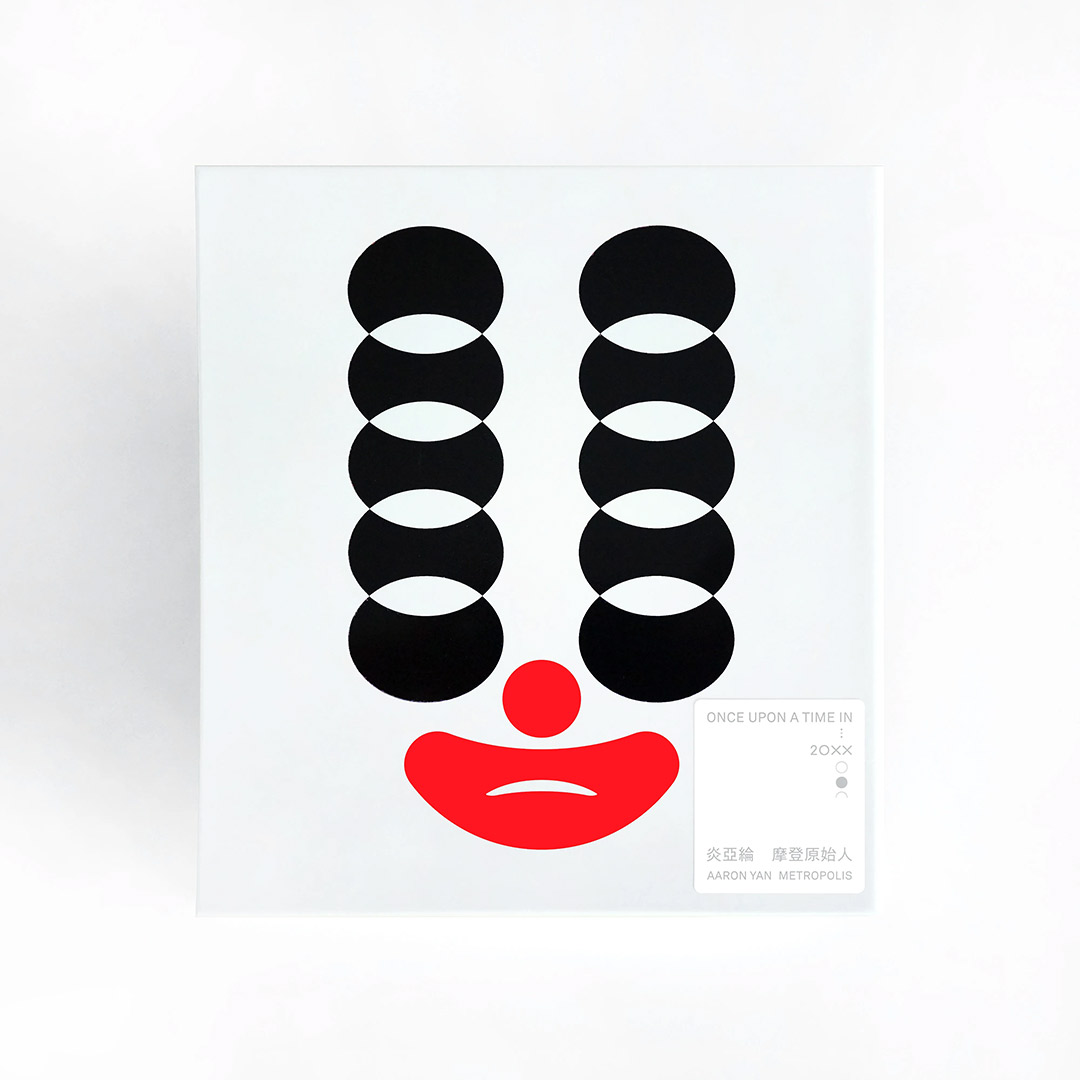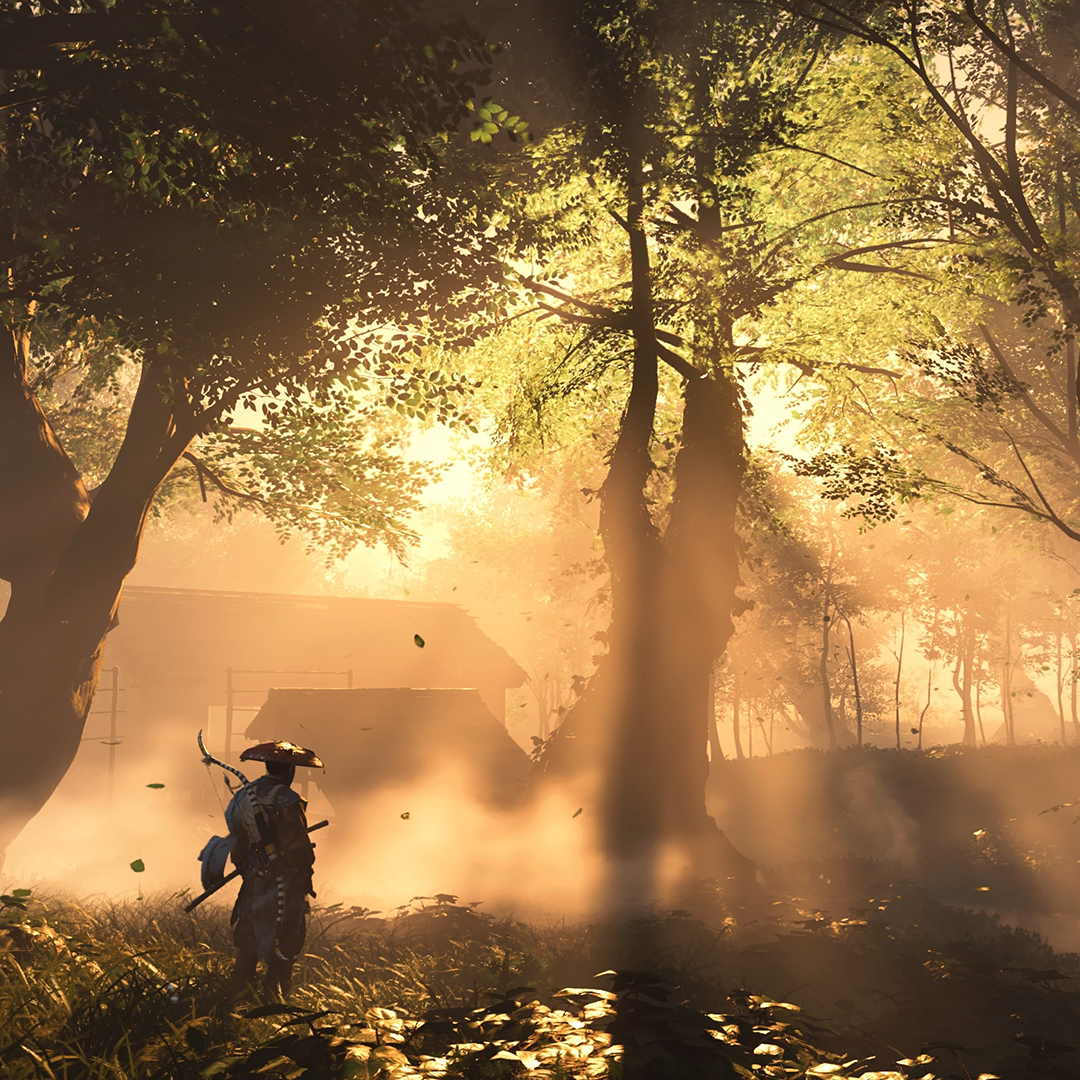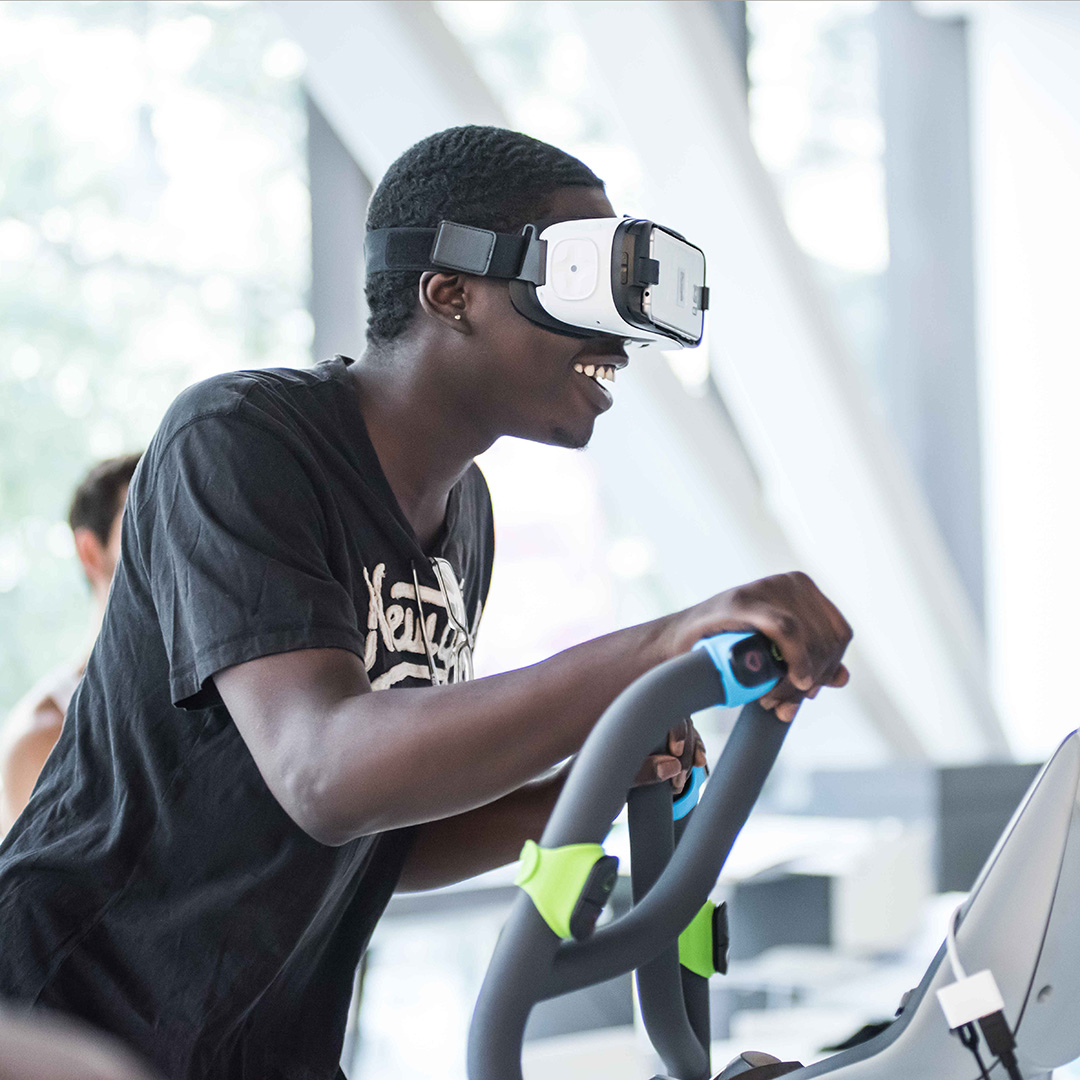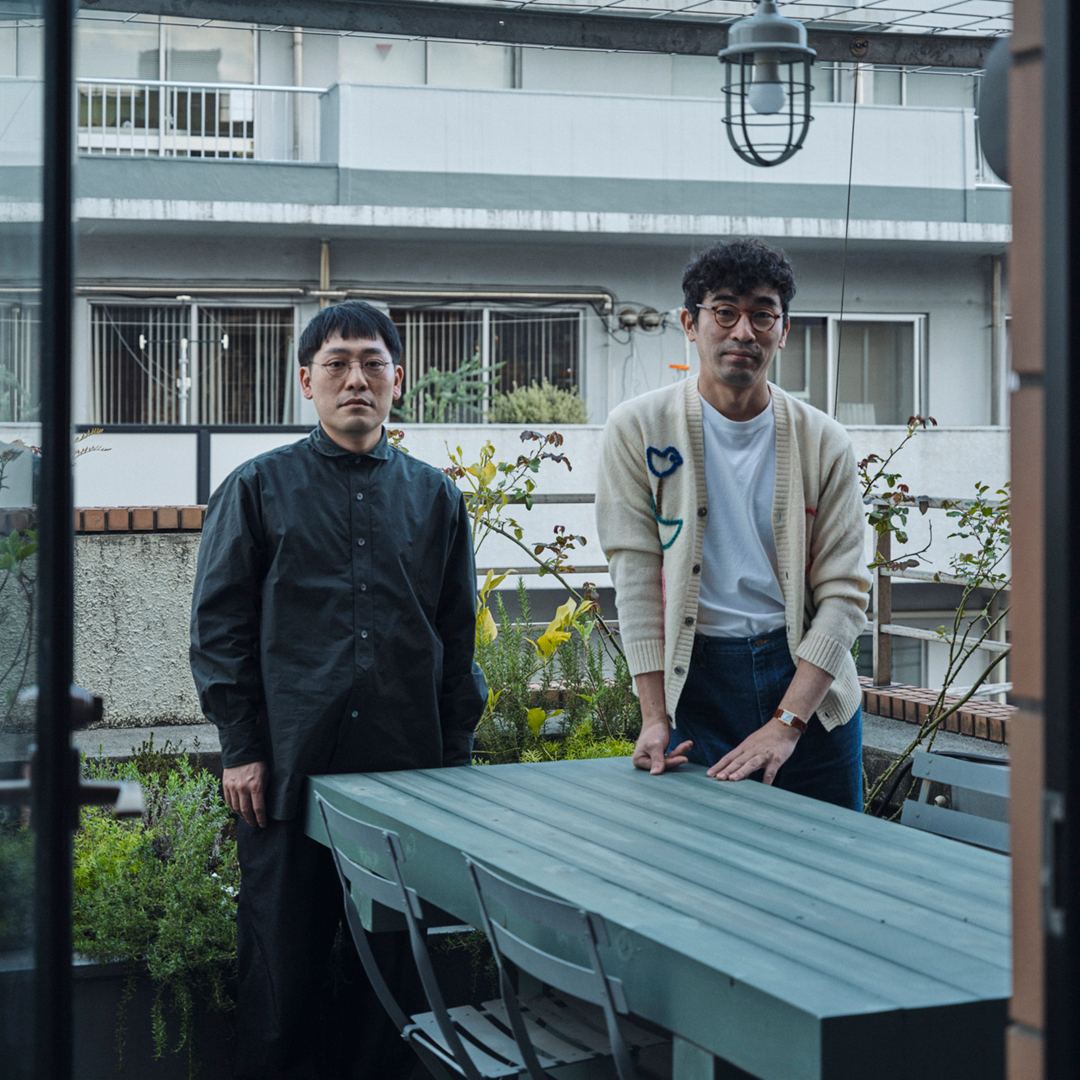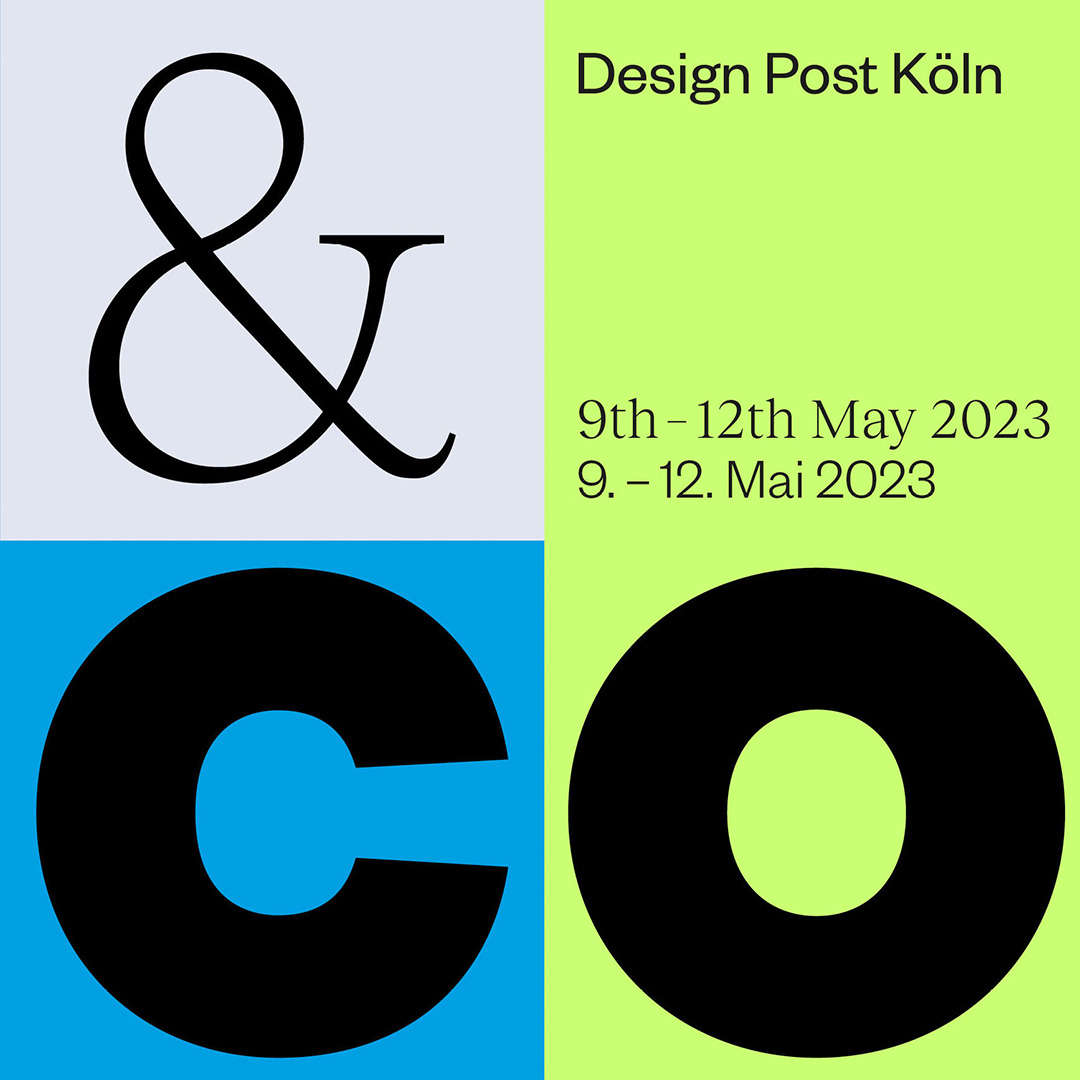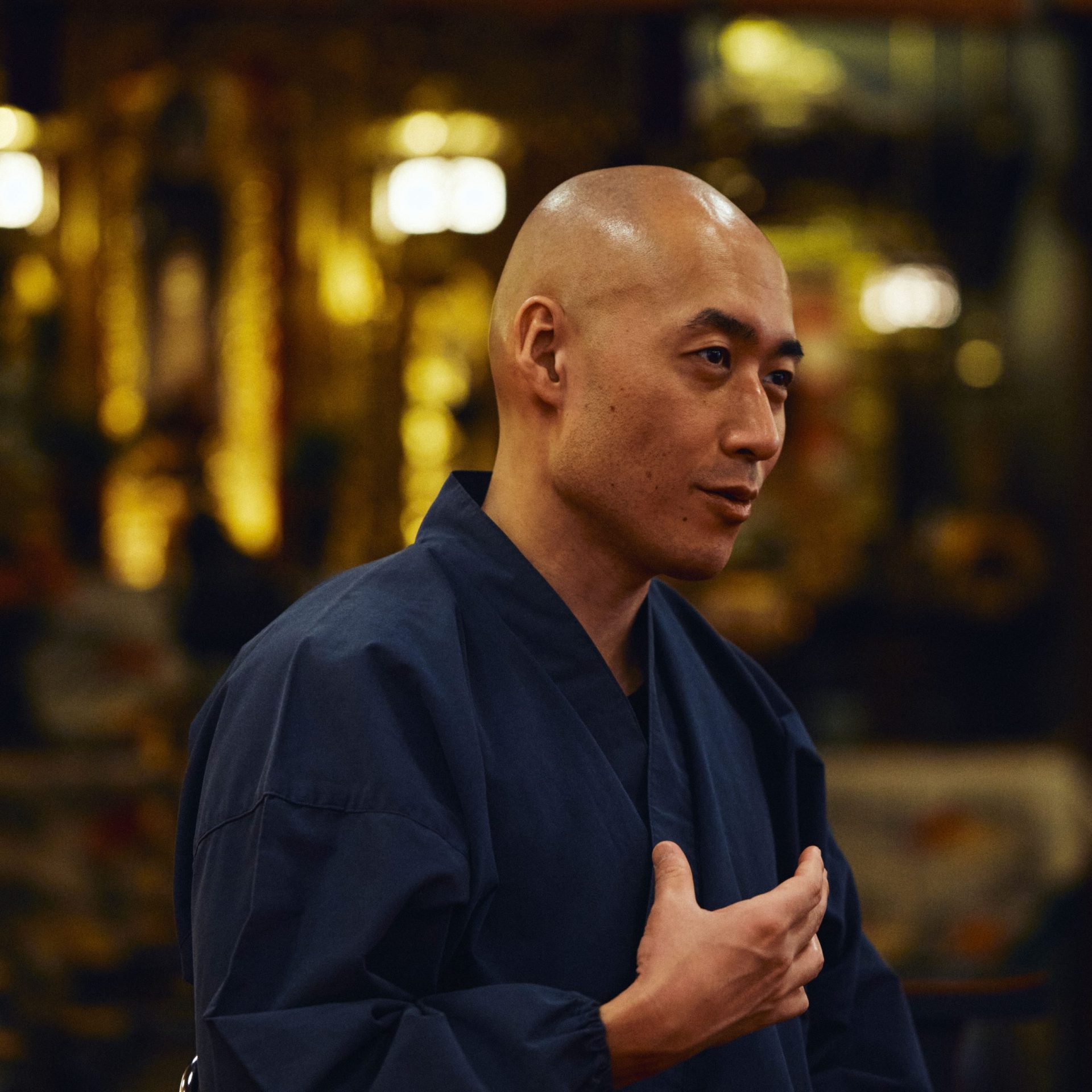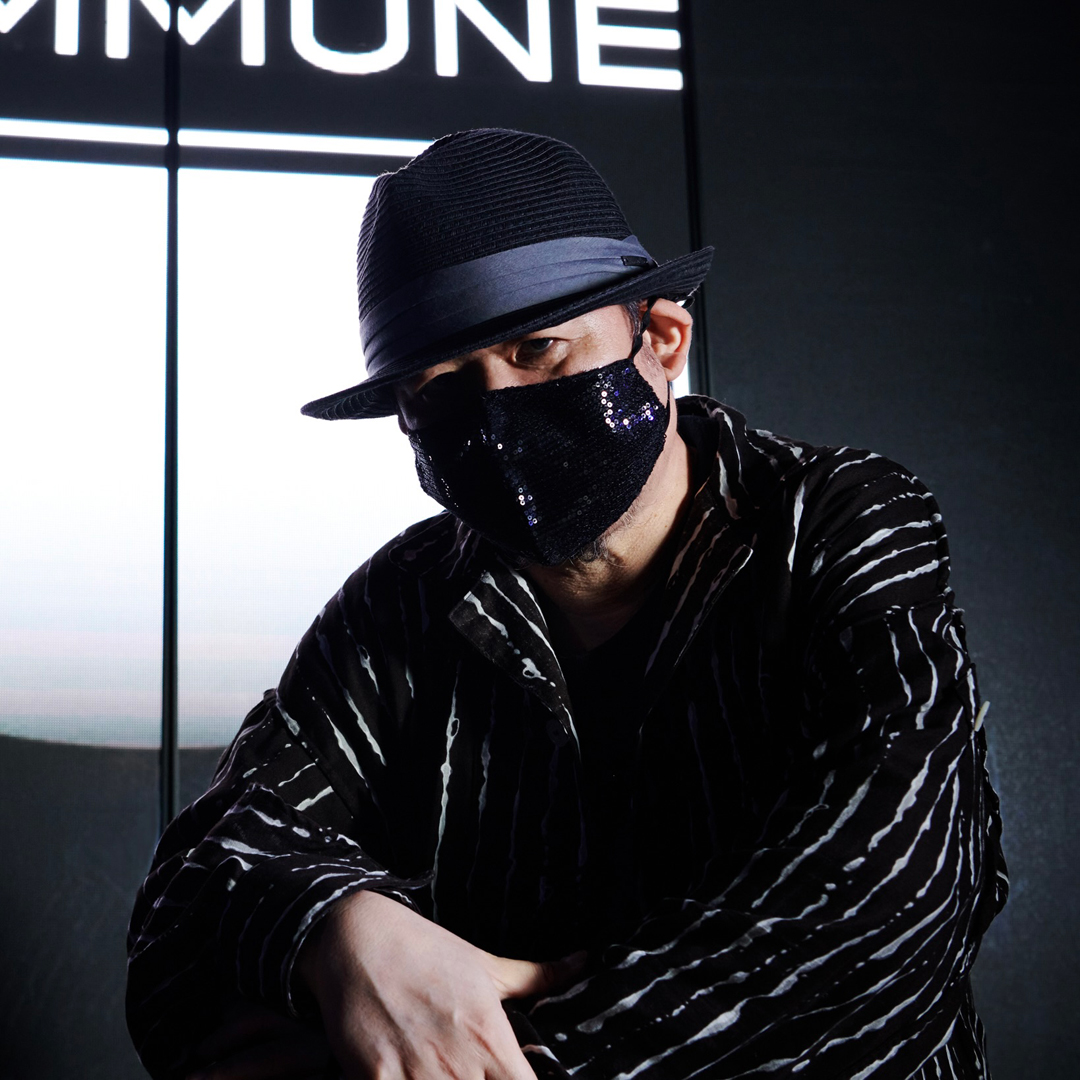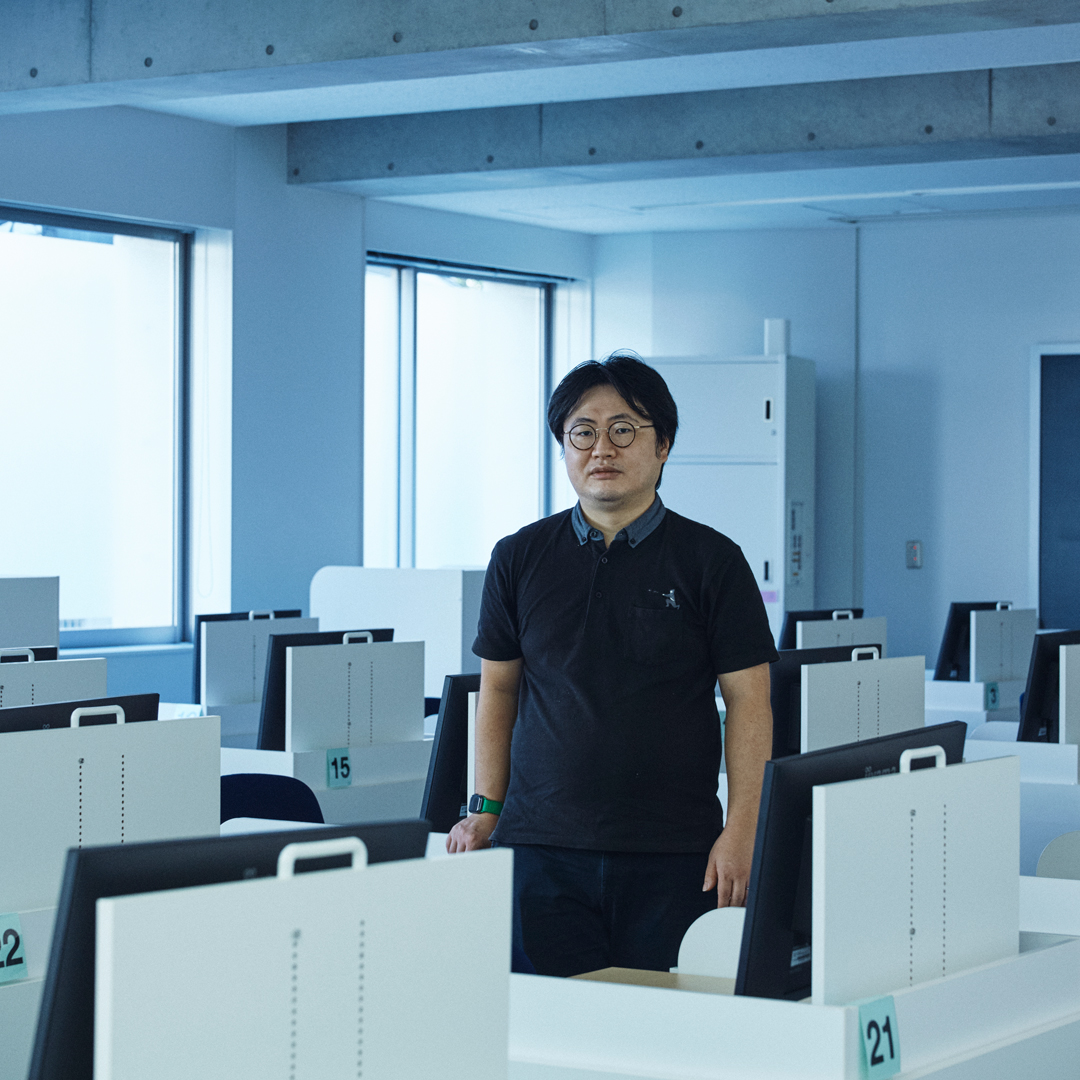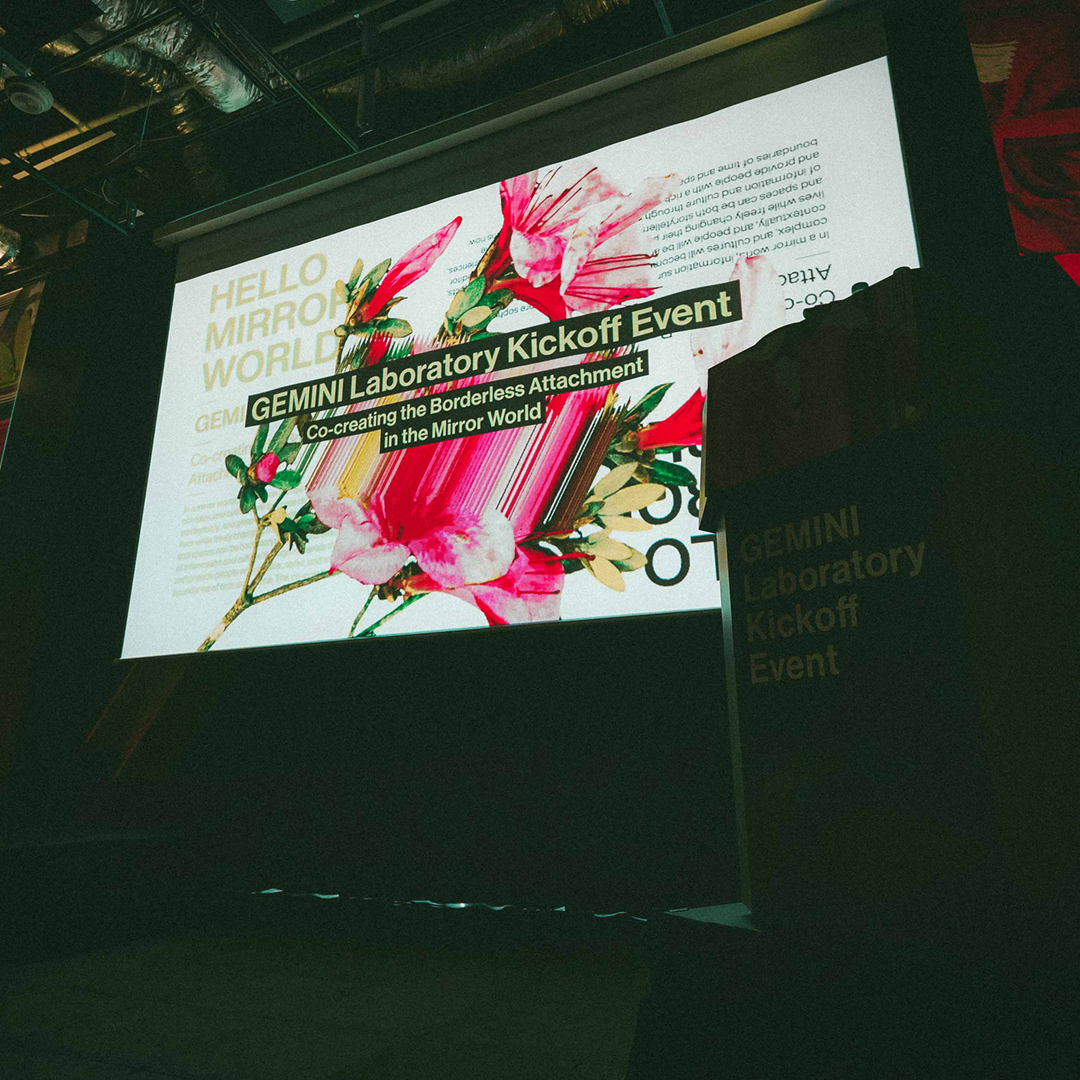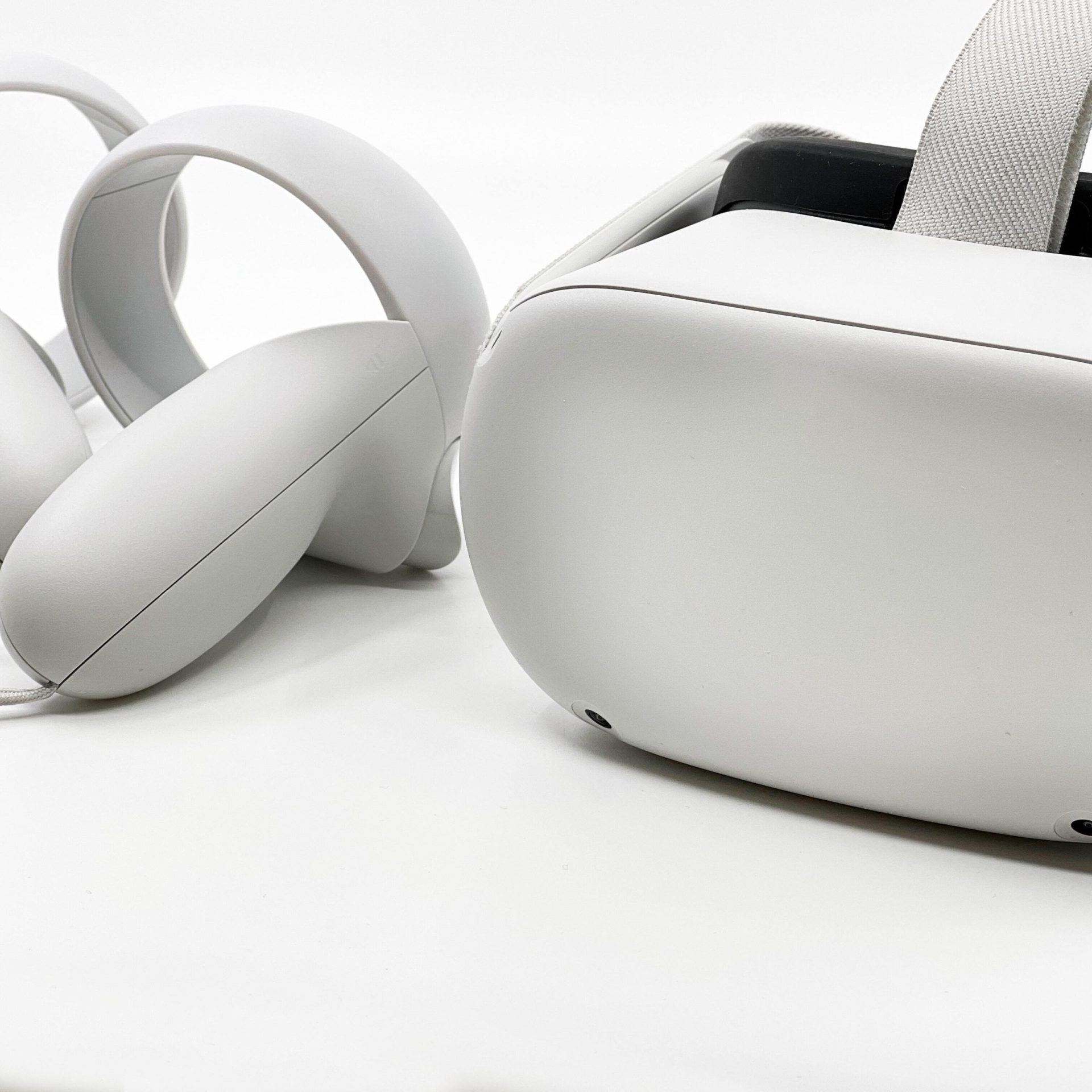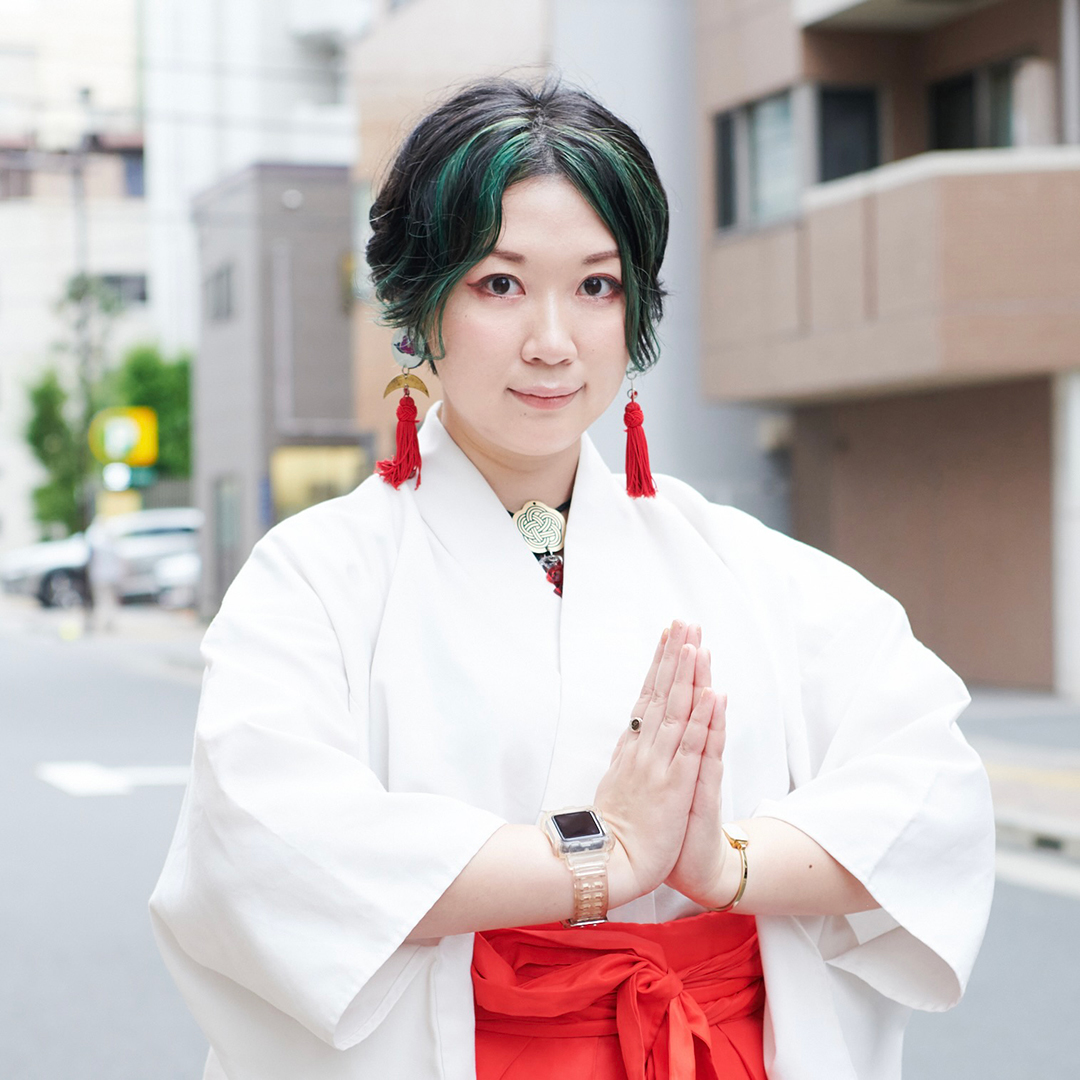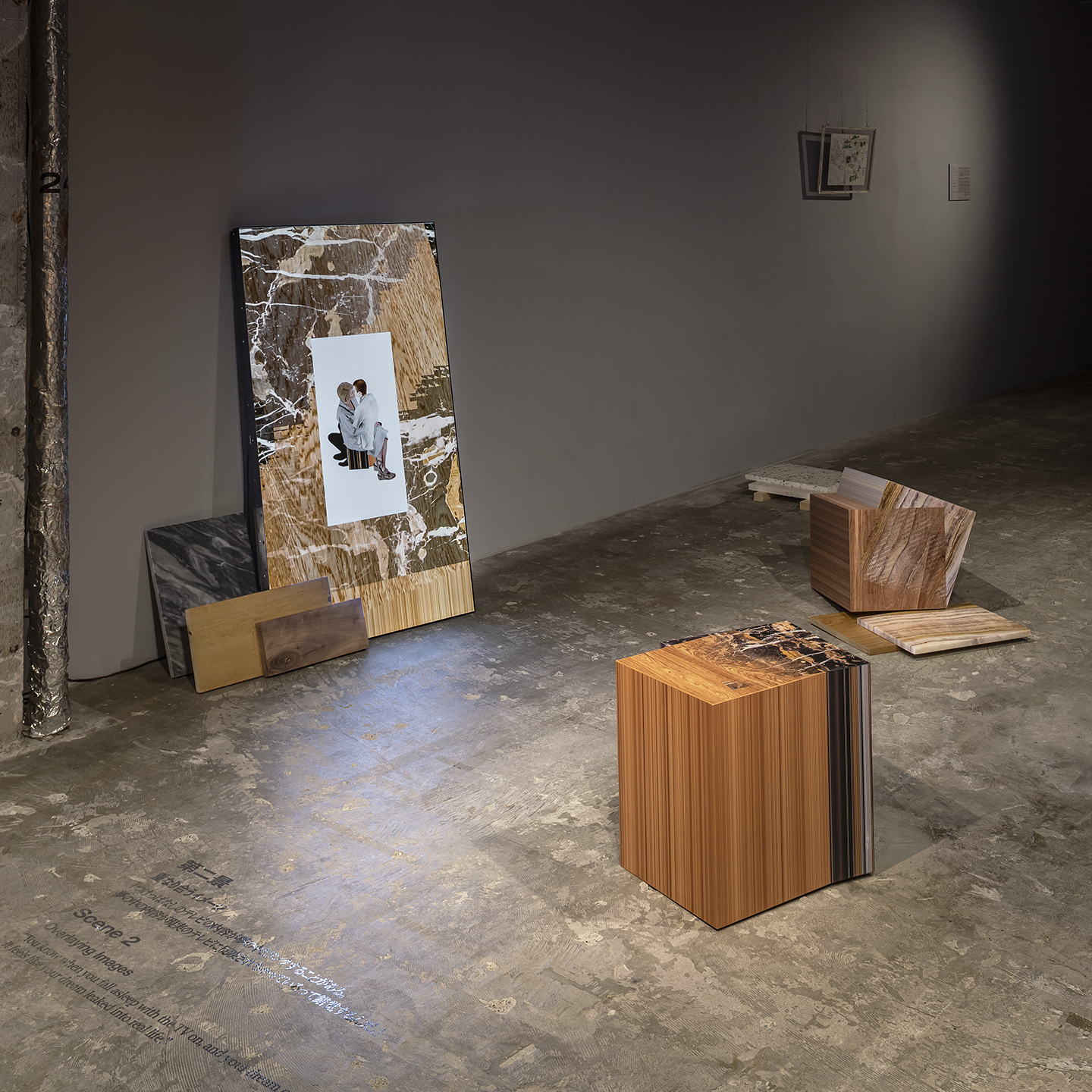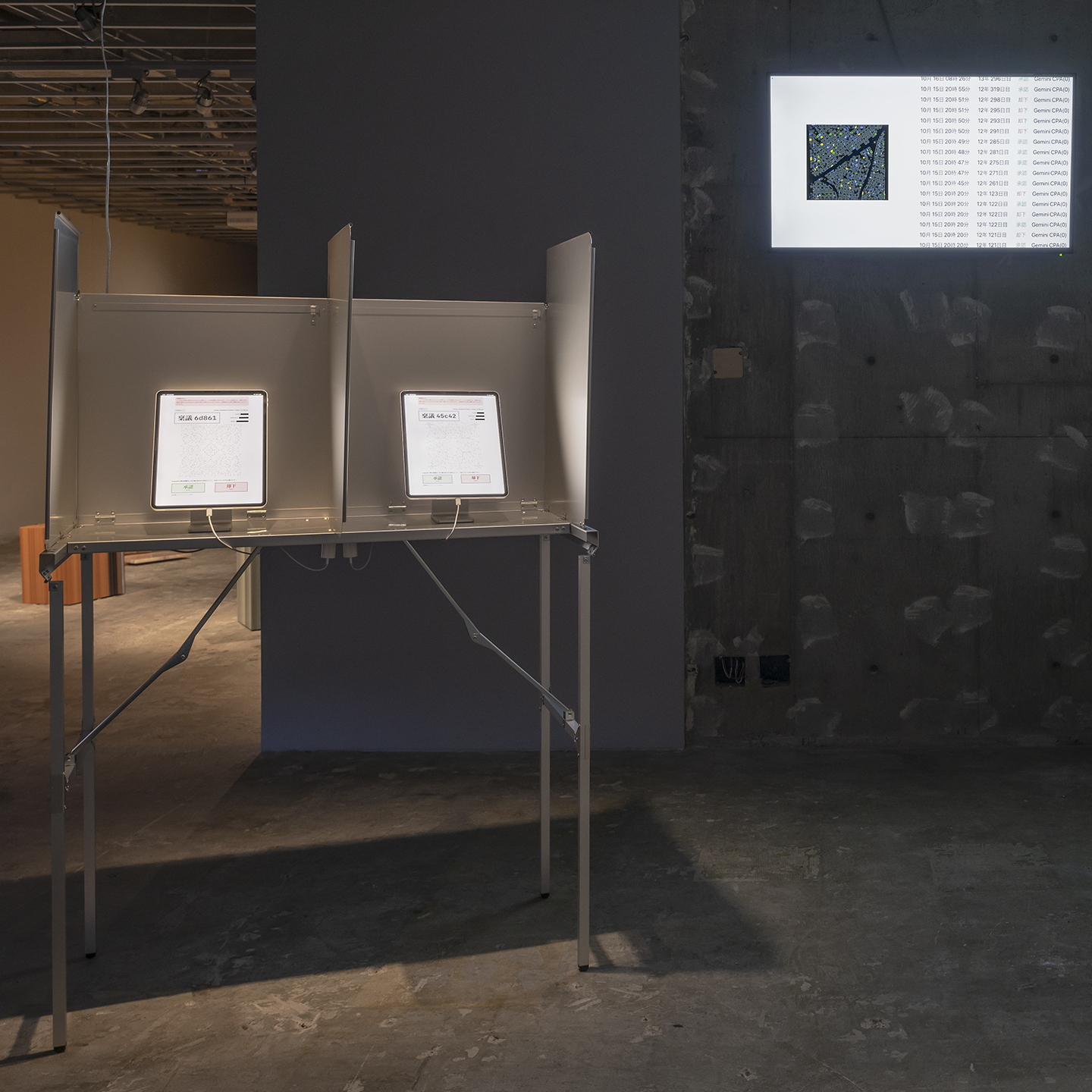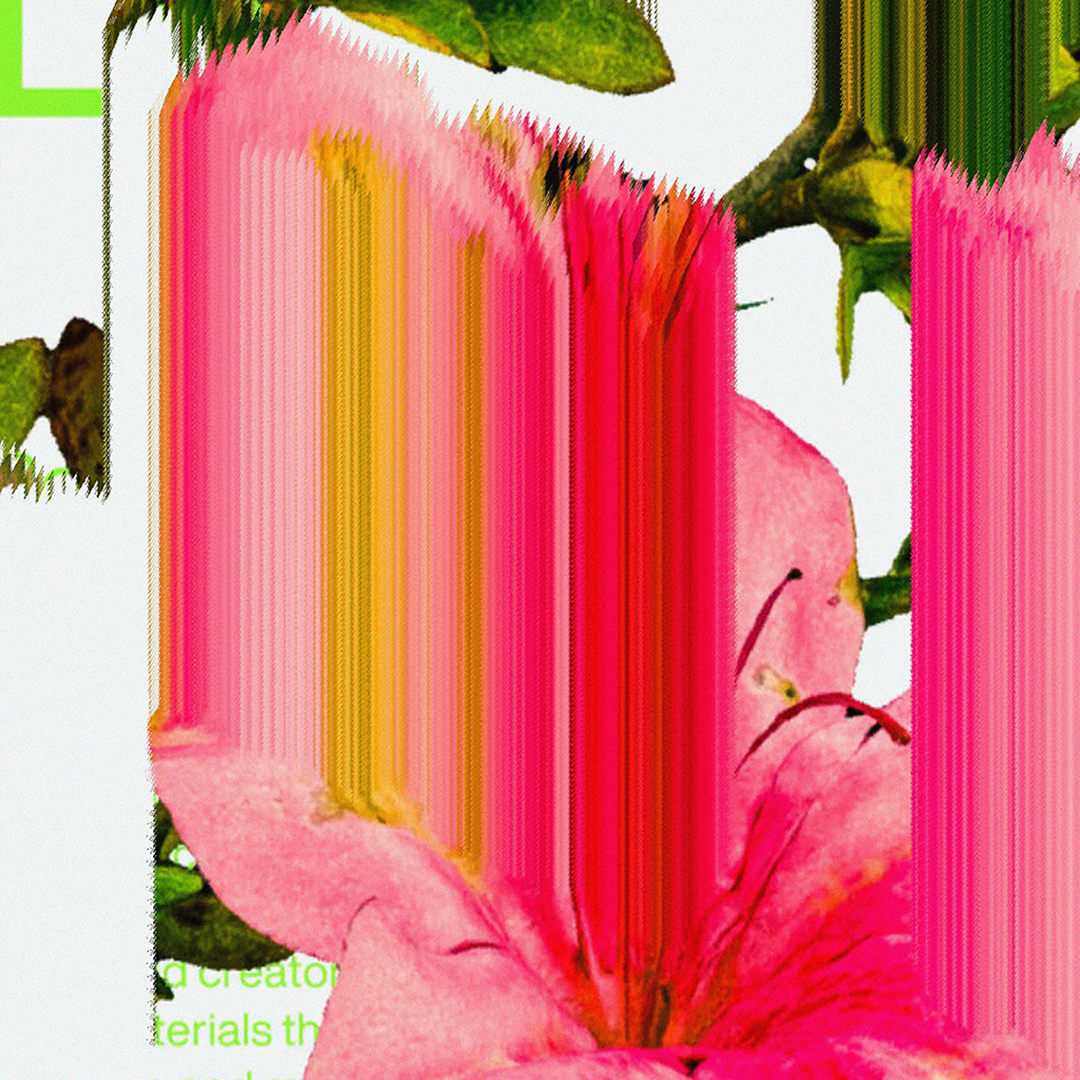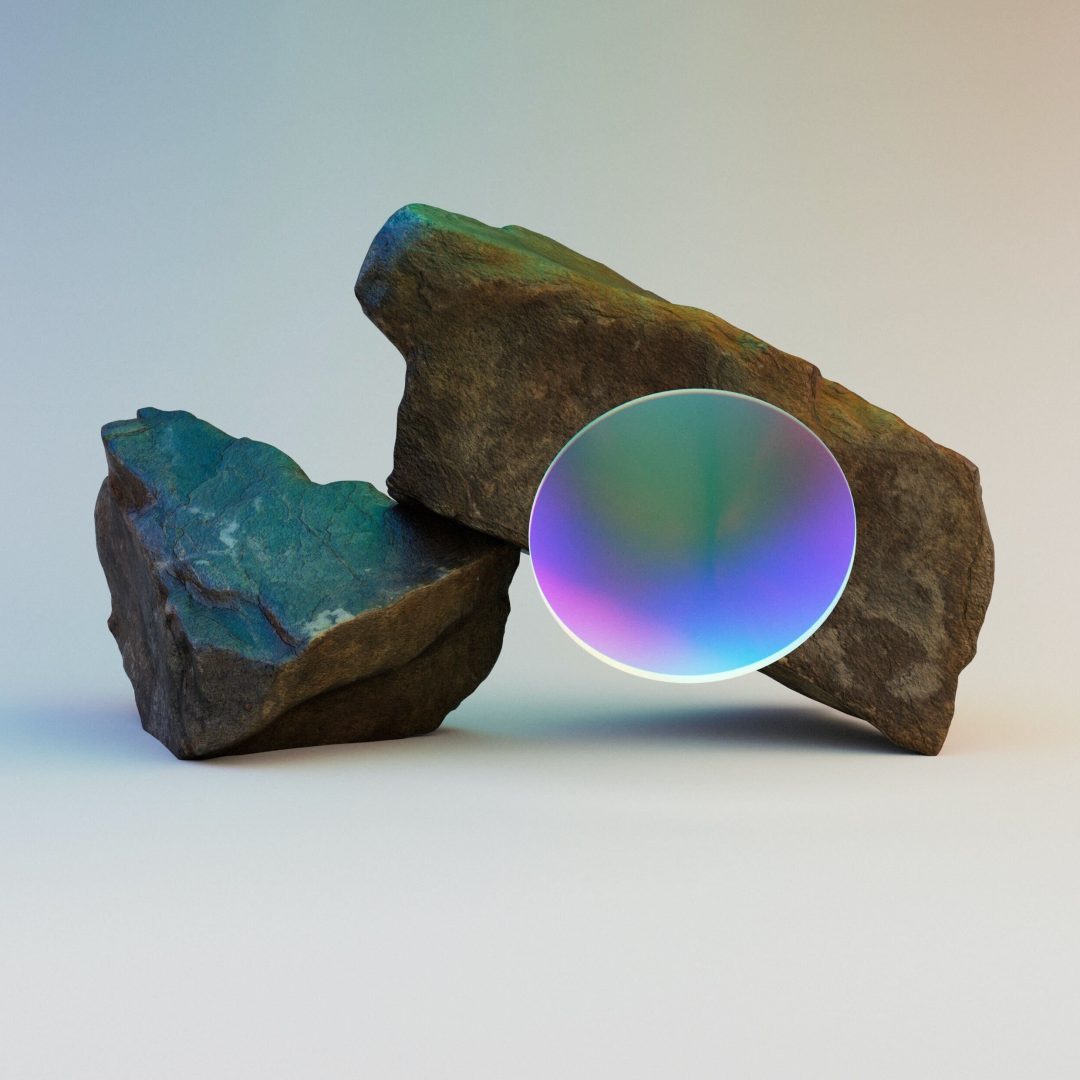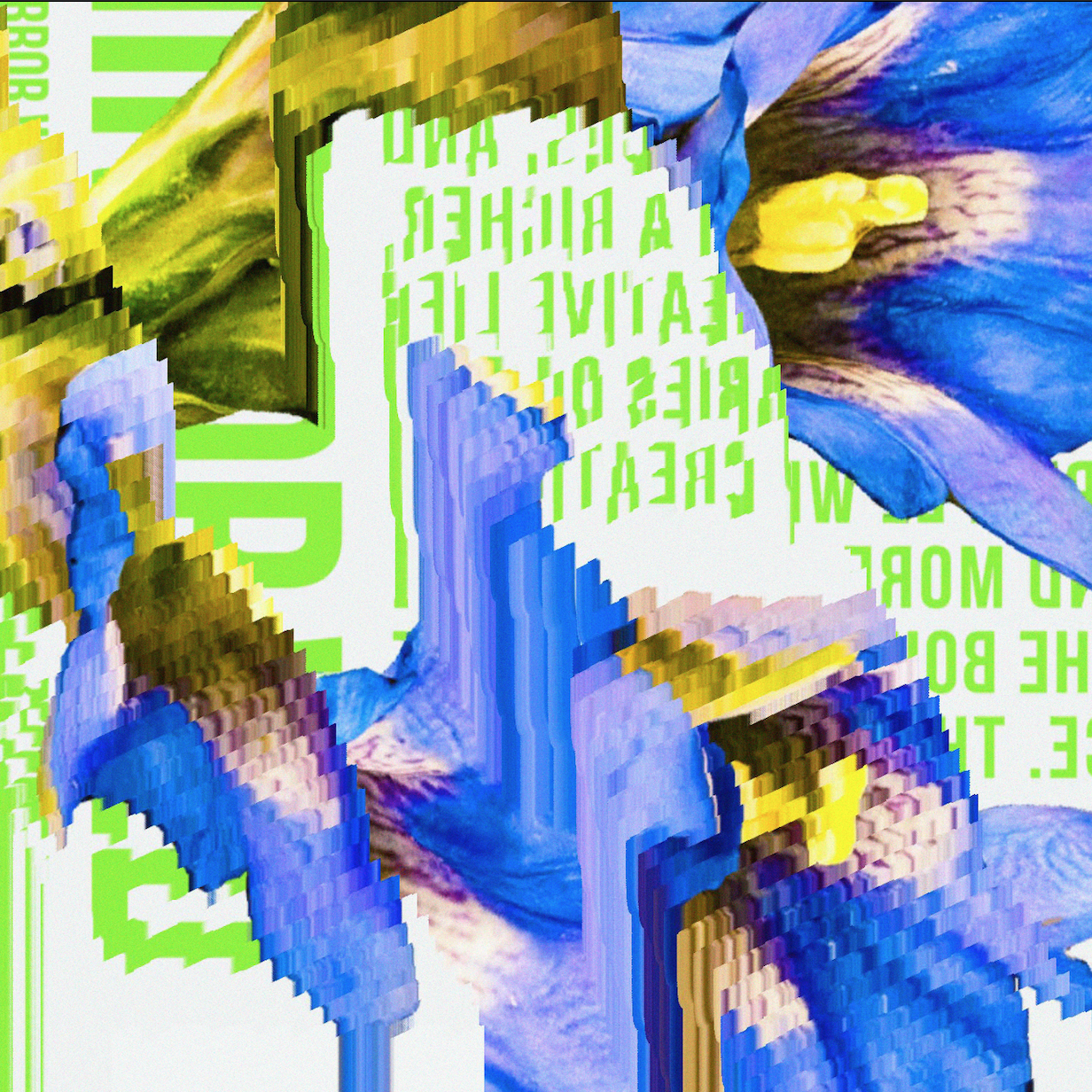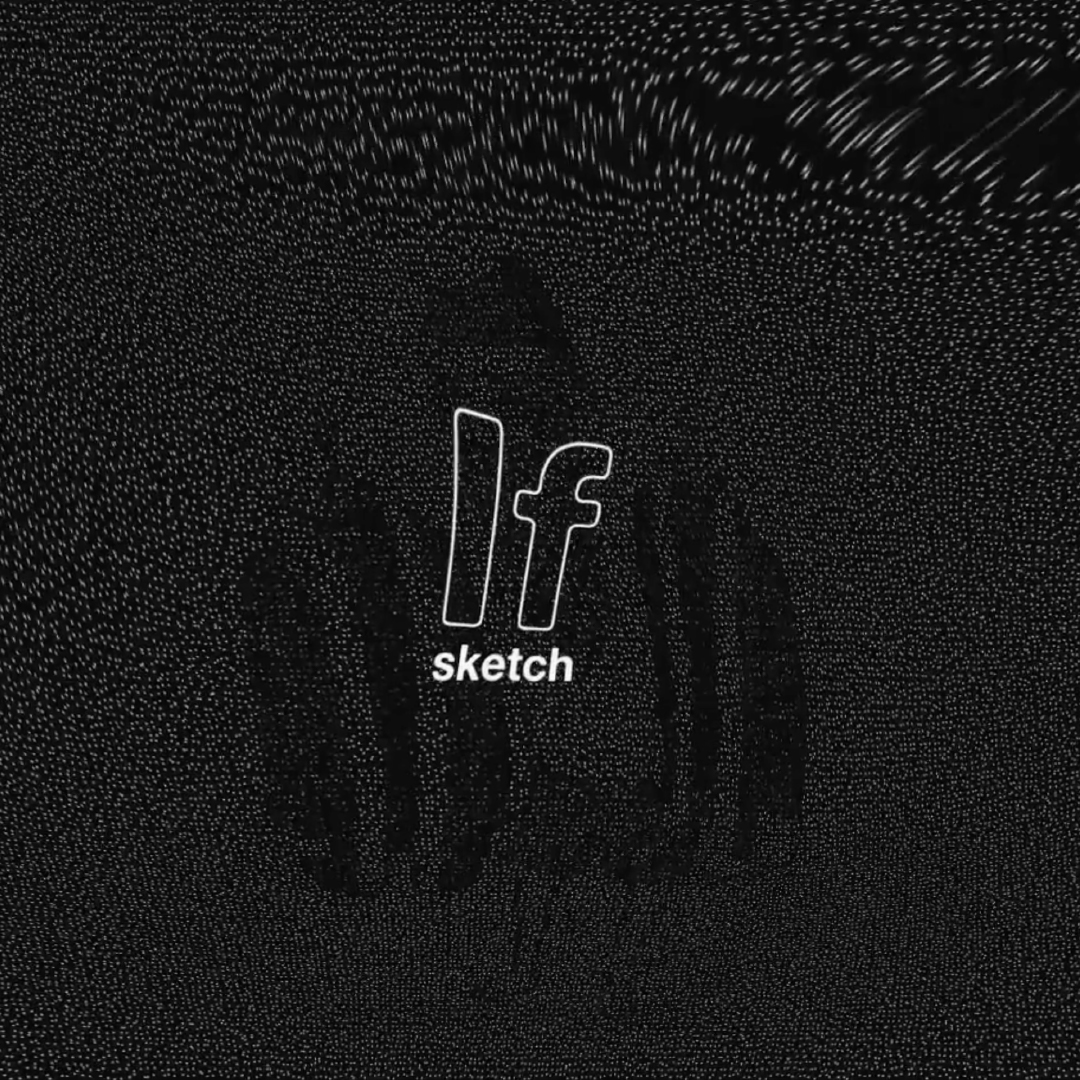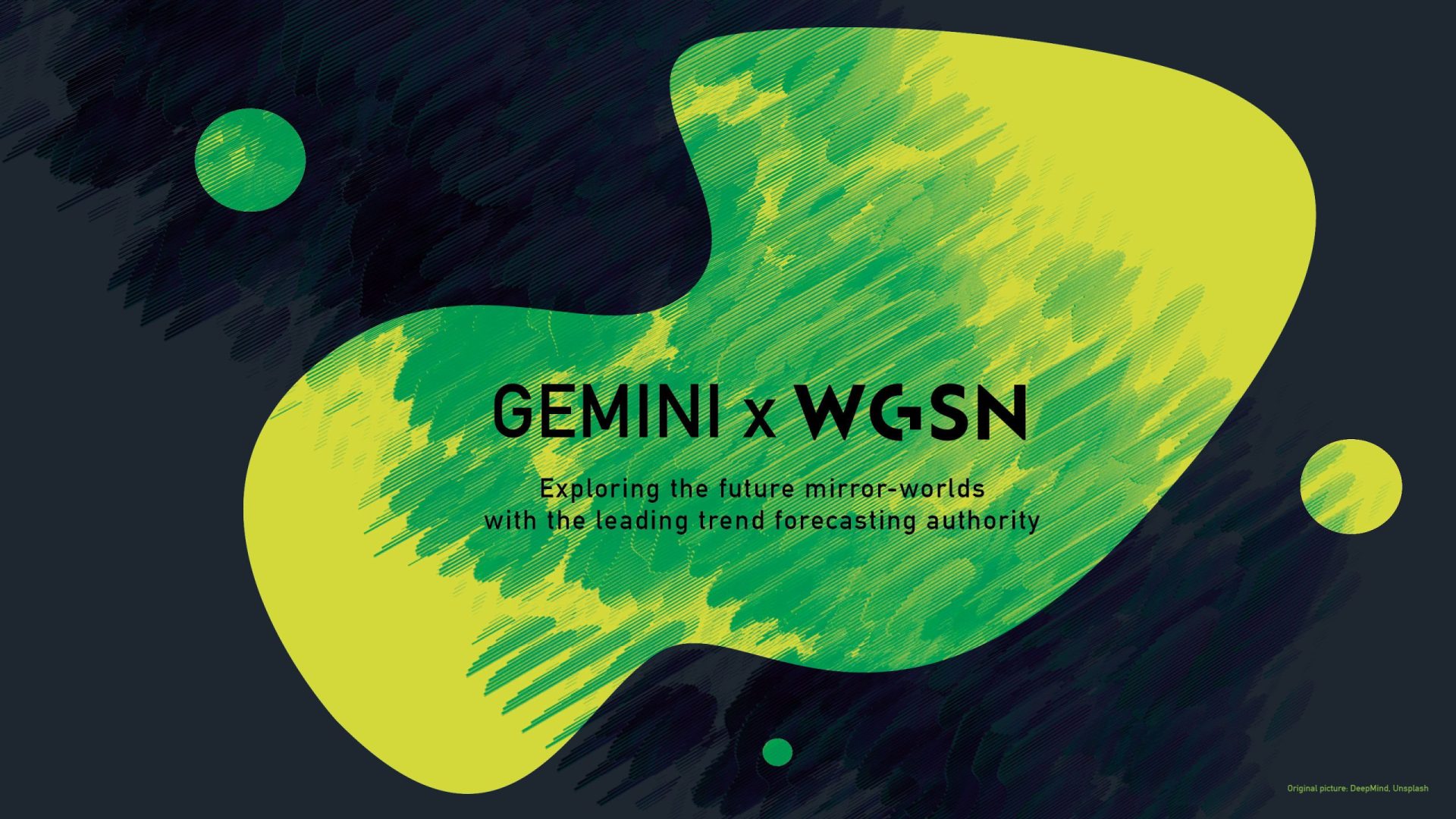Grant Gibson launched Material Matters as a podcast in 2019 with a simple idea – talk to an artist, maker, designer or architect about their relationship with a particular material or technique and discover how it changed their lives and careers. As the podcast grew it evolved also into a physical exhibition, with the help of William Knight, whom Grant met over twenty years prior. In 2022, the pair launched Material Matters – the fair.
We caught up with both Grant and William at the 2023 Material Matters fair, taking place at the iconic Bargehouse in London – once a derelict old factory site, brought back to life in the 1990s as an events venue. Amongst the five floors of products, site-specific installations, a marketplace, a learning area and an extensive talks programme, we chatted with Grant and William about the history and idea behind Material Matters, and how it’s contributing to the future of design and materials.
How Material Matters came to be
—Can you tell us a bit about the background to Material Matters and what it stands for?
William: Material Matters is a young brand, and we are very open to collaboration and ideas. Though we don’t yet have fixed plans for the future, there are two very important components to our operation at the moment. The first is that the brand began as a podcast, where we release episodes on a very regular basis. The second is the annual fair, which is in London during the London Design Festival. Beyond that, we are still thinking about how the brand will evolve in the future.
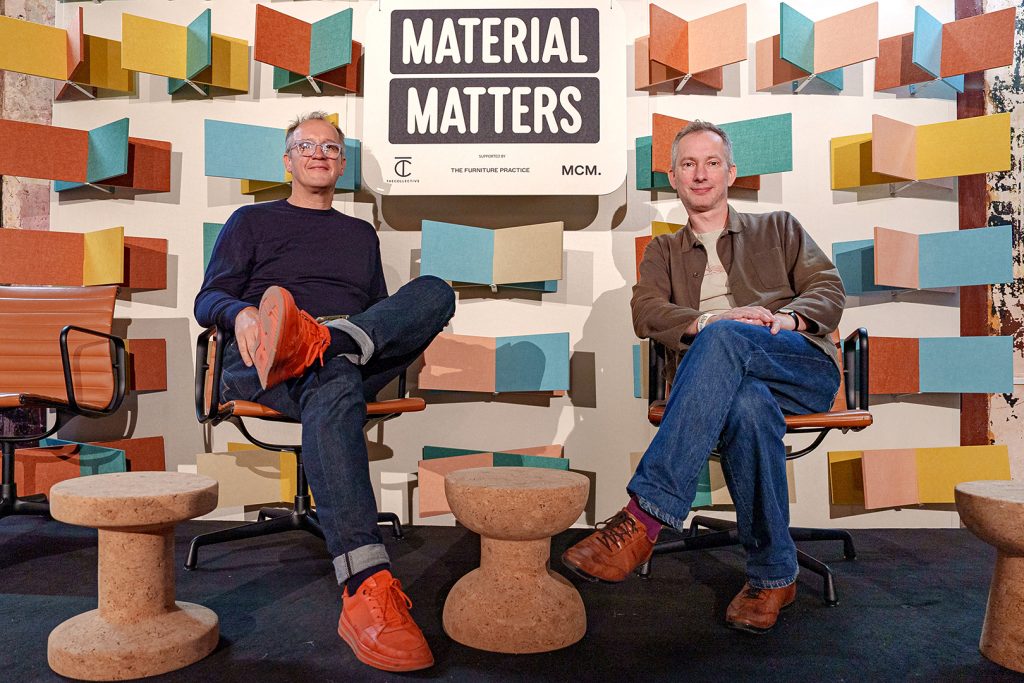
—How did you come to the idea of the podcast at the very beginning?
Grant: I am a journalist by background, and I used to edit magazines about design, architecture, and craft. I love print, but the truth is that people don’t read magazines like they used to. But I like telling stories and when I left my last magazine, I wanted to find an audience. To be completely frank, a podcast seemed the most cost-effective way of doing that.
I launched 6 episodes in 2019, not really knowing whether anybody would listen. But people did! Very quickly an audience grew, and it became clear that people were interested in these topics. From there, creating live events seemed to be an obvious next step. The first person I thought of then was William – because he’s rather brilliant.
—How did this evolve to also include the in-person fair?
William: We launched the fair in 2022. Much like the podcasts, the thinking and the planning was aligned with the general state of design promotion. As Grant and I have mainly been based in London, it made sense to focus our efforts in this city. We both had long associations with the London Design Festival. Ultimately all this meant we had the best opportunities to build on our audience.
There are a few things about the event that relate to the podcast. The first is accessibility. The podcast is easy to listen to and doesn’t require technical knowledge, even though it is in depth – it’s a great source of knowledge about a particular topic. The same goes for the fair, where you can tap into a wealth of professional knowledge. My background is in organizing design events, so we’ve also tried to reflect the most recent thinking on how to execute these events.
Two examples are helpful here. One is that the exhibition industry is very resource-intensive and even wasteful as it creates temporary environments. We wanted to avoid building fake settings and instead create within existing spaces that have their own story.
The second is in terms of content. We wanted the fair to be focused – not just on generic ‘design’ but on materials. On one level we bring the focus around that narrative. But we can also open it up, which comes back to the story-telling. On each floor of the exhibition, there is a whole range of stories around materials, innovation, design thinking, products, and industrial application… all the way to handmade craft.
Materials – connecting the personal with the professional
—Why are you focusing on materials specifically?
Grant: It all started with the podcast. The magazine called ‘Crafts’ that I had come from was all about the importance of materials. When I was conceptualizing the podcast, I thought that rather than randomly interviewing people it would be good to have a thread running through the episodes to bring these people together. Then you could hear their personal stories but through the medium of their relationship with their material. Personal brought together with professional. That also gave us the underpinning for the fair.
This is also how the world is turning. We need to think about what we’re using and how we’re using them. Resources are finite.

—Materials are like interfaces. Behind everyone’s skin is a story. Even in architecture, a facade is like an interface. What lies behind it is what matters – do you have any thoughts on this concept?
William: I totally agree. With our Material Matters journey, I wanted something that allowed me to move across disciplines – from craft to architecture and engineering. Materials cover the full spectrum of disciplines. Through the podcast and through the medium of materials we talk about all sorts of issues, from gender issues to race to more personal issues like bereavement.
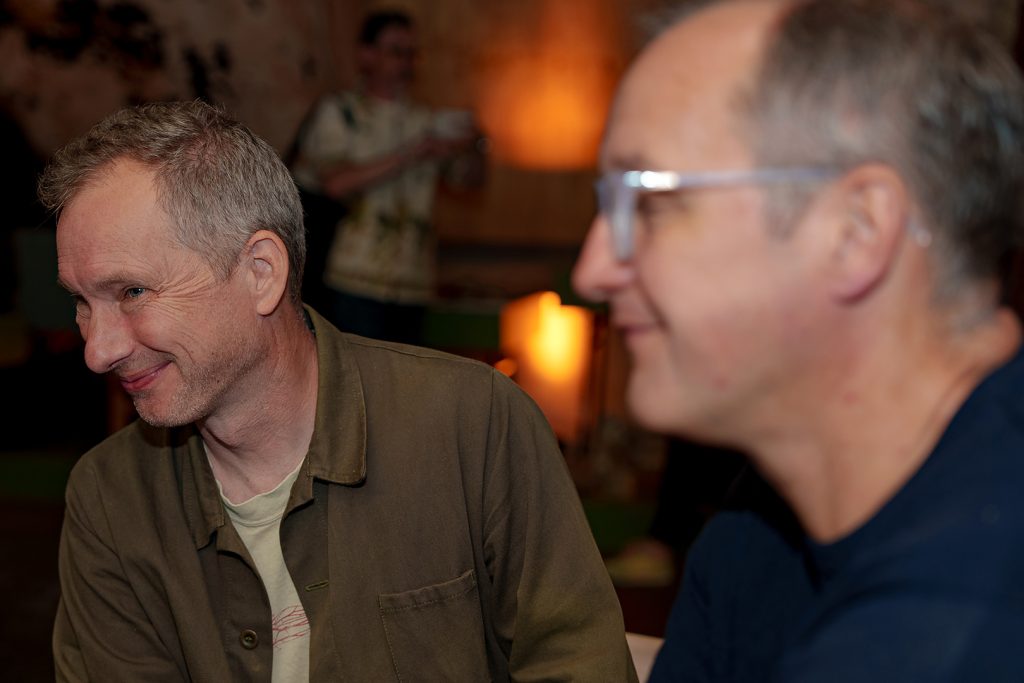
—You are also working in the virtual world, the world of avatars. As an avatar, you can be whatever interface you like! As a man, you can be a woman, or vice versa. A facade hides who you are to the outside world. In the end though, there is always someone behind the facade. This holds true in both the physical and virtual world, and materials have a lot of potential. With this in mind, how do you select the people to exhibit at the fair? Do people apply?
William: It’s a combination.There were people when we launched last year that we definitely wanted to have on board, like Solidwool. We were keen that the show wasn’t just people experimenting on a small scale, but that these materials were in the mainstream. For example, companies like Hydro Aluminium UK Ltd., which works with recycled aluminum across the globe, are really important for us. We end up with a combination of smaller manufacturers and designers and significantly larger companies. People come to us from all over, and we talk with them and figure out the best place for them.
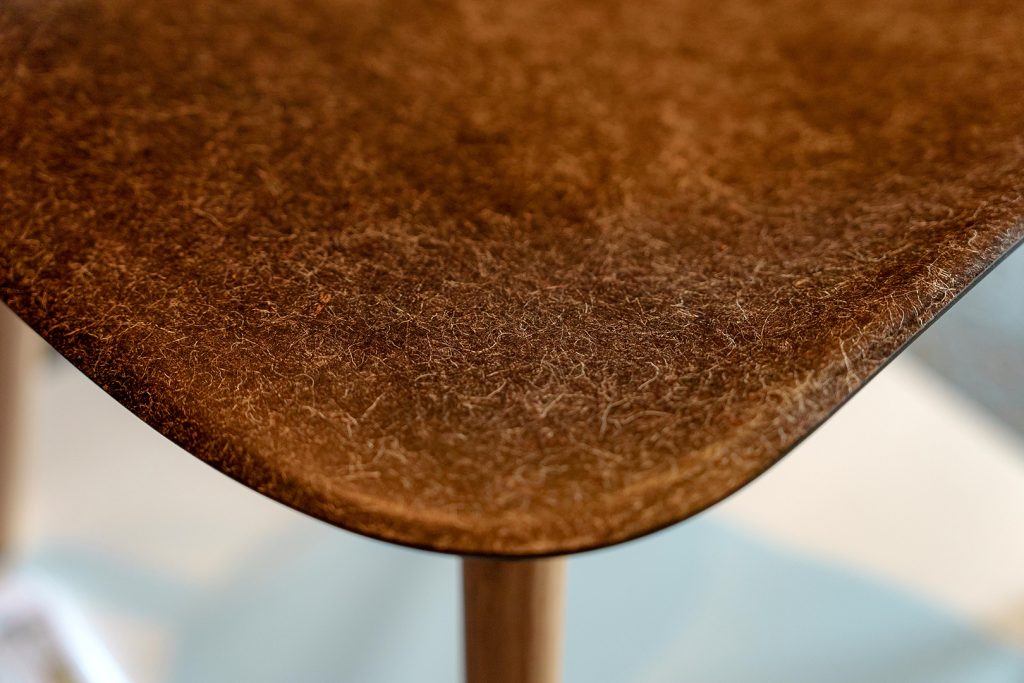
Materials as the foundation for community
—You spoke earlier about building a community, also through your podcast. What has been your experience since last year? Are you successfully building a solid foundation for new collaborations with designers, companies, and other innovators?
William: Accessibility to Material Matters is very important – both for people attending the fair and listening to the podcast, but also for our exhibitors, the people who are producing the materials and showcasing what they’re doing. Currently, Grant and I are at the center of that, where we can help and advise, and bring people together within the fair to make connections. And that’s how the community is built. There is a longstanding convention in events, which is that you can bring people together, you can tell people what’s going to happen… but you can’t control the opportunity of collaboration and the unknown. The event is the setting – it’s down to us to set the tone and allow people to come with an open mind and a strong sense of working together to create one thing.

—Do you follow up after the event?
William: Yes, we have roughly 40 brands, and we have worked with every single one of them for the event. Some of it is boring, things like insurance and loading times. But most importantly it comes back to story-telling. We want to understand them, their materials, their processes, their market position. We provide the platform for them to express all that.
Grant: Some of these relationships have lasted a long time already. For example, leather expert Bill Amberg was the first person I interviewed for the podcast. What’s also amazing for us is to see people’s work developing. For example, Blake Joshua left the Royal College of Art, and last year this was the first place he exhibited at. You can see such a big progression in his work even one year later.
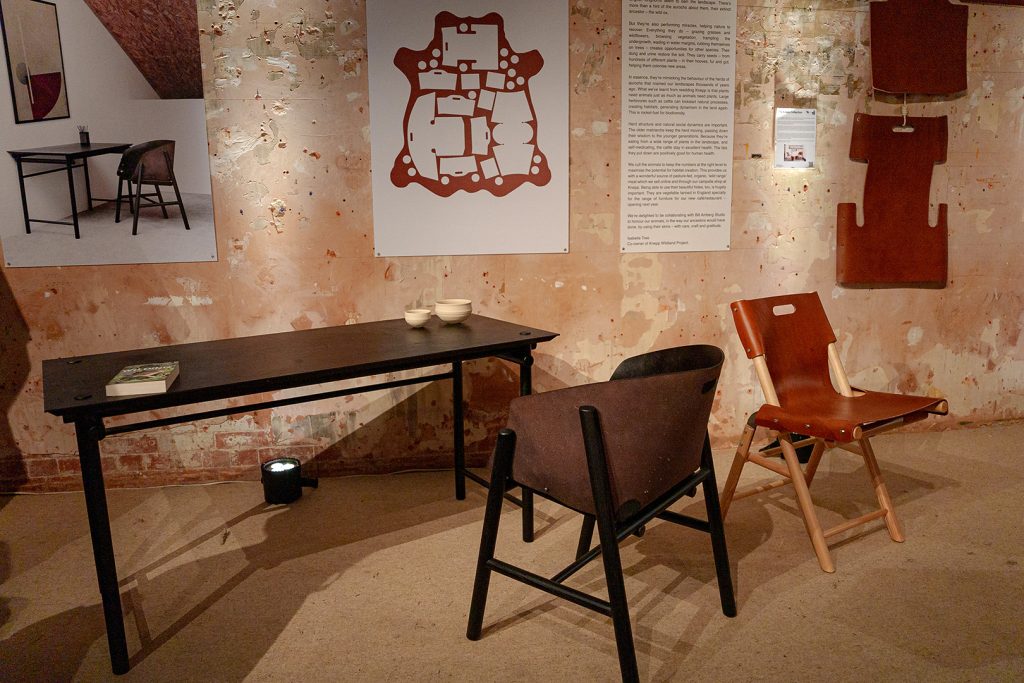
Sustainability – or rather – ‘material intelligence’
—There are lots of companies talking about sustainability – and this venue itself embodies that. Can you elaborate a bit on the thinking there?
William: There were things we didn’t want to do when we decided to launch. One of those was to hold a fair in a big hangar space on the outskirts of the city with a shell scheme. We like the idea of being part of a building that has a lot of embedded carbon itself.
—There is such a prevalence of exhibitors focusing on sustainability. Was this intentional?
William: That’s a good question with a slightly complicated answer. I’m wary of the word ‘sustainability’. I think it’s in danger of being abused. I prefer the phrase ‘material intelligence’. Inevitably if you’re talking about material intelligence, you’re engaging with people who derive materials from waste streams or are recycled in some way. We start talking about circularity and regenerative design. These are more useful terms.
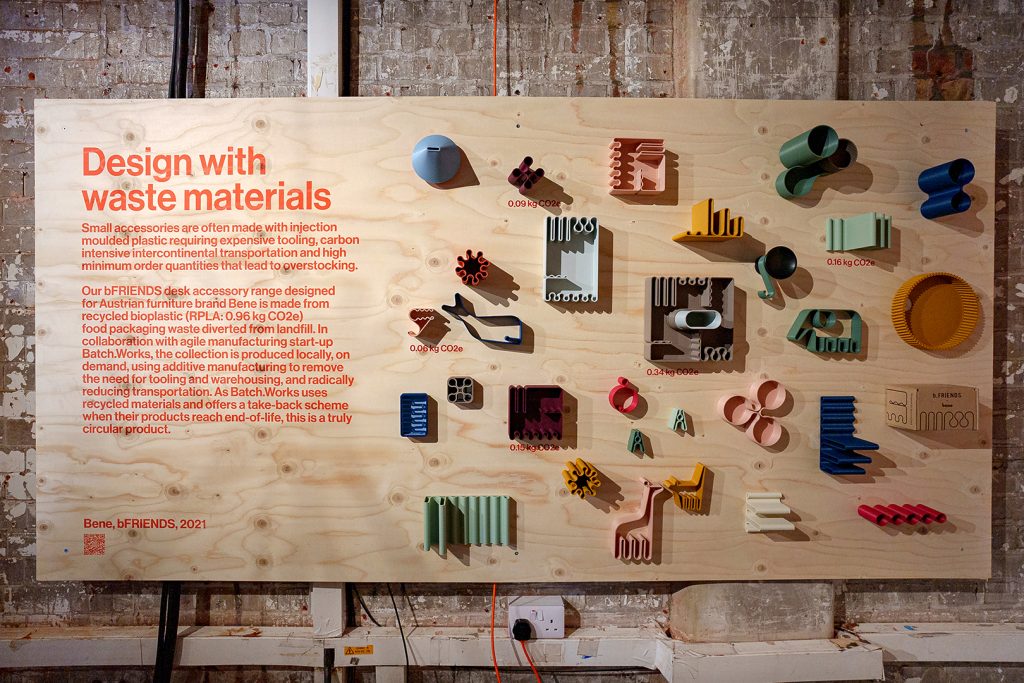
—In Japan, the concept of sustainability still lags behind the UK – there is less public awareness on the issue of material intelligence. It’s a systemic issue. Corporates have some interest, but are more aware of costs rather than the environment. Pushing this forward requires resources and takes time. This is a difficult obstacle to overcome.
William: Yes, and this is why Material Matters is important as a space not only for sharing knowledge and insight but also crucially for shifting perceptions and changing attitudes. We really want to tell those stories in a positive way. A lot of language around sustainability can be quite negative. Material Matters is here to tell the story of what’s possible, what the future looks like.
We don’t always have to talk about the ‘new’. Even though we have some very cutting edge materials at the fair, we also talk about materials that have been used for thousands of years: wood, hemp, mycelium. One of the downsides of the design industry is this constant fixation on the new. We shouldn’t forget the properties of materials that have been important to us for thousands of years.
—On that point, what traditional materials do you think will last long into the future? What new materials will?
William: The things I think will last are age-old already, they have been proven. Cork is another one. It’s about perception. And the value of those materials and what they’re capable of doing.
Grant: Hemp is a really interesting example because people don’t understand it. They think you can smoke it and you just end up giggling at the Simpsons. But hemp is a wonderful crop. It can grow in difficult soils and does not require pesticides. You can use every part of the crop and it can be used for everything from bread to building. In the UK at the moment, if you want to grow hemp, you need a license from the Home Office. We need to change that. It’s an example of a material where the perception of it needs to be changed.
—Do you think there will be more hemp-derived new materials in the future?
William: I hope so. For the cutting edge side of things, it’s the advancement of technology. Some of the materials that we showcase have come out of laboratories. The exhibitors are here to talk about the things that their materials may possibly do in the future.
Grant: It’s not just about the materials themselves, but also design systems. We have lots of resources, but we don’t use them correctly. We need to design products so they can easily be fixed, repaired, recycled. We need to find ways to reuse polyester so it doesn’t end up in mountains of clothes in Chile, which it currently does. It’s not just the materials themselves – it’s how we use them.
—We noticed that there are several 3D printers and other tools around, which can reduce the amount of CO2 emissions. Can you tell us more about this aspect of design and materials?
William: Yes, we try to minimize waste. Rather than carving things away, if you’re adding materials as a 3D printer does, you have fewer bits left over. It’s also about focusing on the local – someone might design something somewhere else but it gets printed locally. Use of technology is key, whether that’s a 3D printer, or designs sent to a fab lab somewhere else in the world, laser cutting. The models of distribution are changing.
—All this must help you in your goal of building a community? You’ve got resources – people, designers, and opportunities for collaboration that can help develop the industry. In Japan, also as an island country, we need to ship resources from elsewhere. Logistics have historically been an issue. But today, we can work with people from all around the world. This is the future of design and materials.
William: Yes, and this goes back to Grant’s point about systems. For the last few days here, we’ve heard some incredible stories about what’s possible. But we’ve also heard so many stories about systems that are so badly used. The most obvious one is the need to bring things in and out of an island. The best example is where huge amounts of resources are spent on transportation of products, resources, or materials that are available locally. But because of economic, political or other reasons, we miss the opportunity to be more sustainable in a systemic way.
That’s the point about intelligence. It isn’t necessarily just about how to use or shape or create things. Where is that material at its most effective? We can even think about the relationship between materials and artificial intelligence, particularly around the notion of scaling. Traditionally, scaling has been a problem associated with materials – access to markets, standards, testing, etc. As we try to harness artificial intelligence, what are the implications for material intelligence? How can we make the most of it?
—This is so relevant for everything we are doing at the intersection of the physical and virtual world as well as in the Metaverse. It’s so important to make sure these technologies really complement the community. There is so much to learn and so many ideas to exchange with each other – and here, virtual platforms also allow people dotted around the world to communicate.
William: So much is possible at the interface between new technology and existing intelligence!
Index
Index
Archives
Recommend
Recommend
Recommend
Recommend
Recommend
-

{ Prototype }
GEMINI Laboratory GLOBAL DESIGN AWARDS WINNERS ANNOUNCEMENT
GEMINI Laboratory GLOBAL DESIGN AWARDS WINNERS ANNOUNCEMENT
GEMINI Laboratory GLOBAL DESIGN AWARDS WINNERS ANNOUNCEMENT
-

{ Community }
Fashion Historian Pamela Golban: Beyond the Fusion of Virtual and Physical
Fashion Historian Pamela Golban: Beyond the Fusion of Virtual and Physical
Fashion Historian Pamela Golban: Beyond the Fusion of Virtual and Physical
-

{ Special }
Wellbeing in the Metaverse
Wellbeing in the Metaverse
Wellbeing in the Metaverse
-

{ Special }
Textiles&More:Feeling the metaverse
Textiles&More:Feeling the metaverse
Textiles&More:Feeling the metaverse
-

{ Community }
Taking on social problems through games, “Games for Change” believes that games can offer more than just fun
Taking on social problems through games, “Games for Change” believes that games can offer more than just fun
Taking on social problems through games, “Games for Change” believes that games can offer more than just fun
Hot topics
Hot topics
Hot topics
Hot topics
Hot topics
-

{ Prototype }
GEMINI Laboratory GLOBAL DESIGN AWARDS WINNERS ANNOUNCEMENT
GEMINI Laboratory GLOBAL DESIGN AWARDS WINNERS ANNOUNCEMENT
GEMINI Laboratory GLOBAL DESIGN AWARDS WINNERS ANNOUNCEMENT
-

{ Community }
Scenting the metaverse with olfactory futurist, Olivia Jezler
Scenting the metaverse with olfactory futurist, Olivia Jezler
Scenting the metaverse with olfactory futurist, Olivia Jezler
-

{ Community }
Architect Mark Foster Gage: Kitbashing opens up design possibilities
Architect Mark Foster Gage: Kitbashing opens up design possibilities
Architect Mark Foster Gage: Kitbashing opens up design possibilities
-

{ Community }
Fashion Historian Pamela Golban: Beyond the Fusion of Virtual and Physical
Fashion Historian Pamela Golban: Beyond the Fusion of Virtual and Physical
Fashion Historian Pamela Golban: Beyond the Fusion of Virtual and Physical
-

{ Community }
Ars Electronica’s Hideaki Ogawa on the Happy Relationship between Media Art and the City
Ars Electronica’s Hideaki Ogawa on the Happy Relationship between Media Art and the City
Ars Electronica’s Hideaki Ogawa on the Happy Relationship between Media Art and the City
-

{ Community }
Unlocking New Worlds: How Gaming is Leading Southeast Asia’s Journey into Web3
Unlocking New Worlds: How Gaming is Leading Southeast Asia’s Journey into Web3
Unlocking New Worlds: How Gaming is Leading Southeast Asia’s Journey into Web3
-

{ Community }
Tomihiro Kono, who also designs wigs for Björk, explores multiple areas of creativity, including 2D, 3D, and AR
Tomihiro Kono, who also designs wigs for Björk, explores multiple areas of creativity, including 2D, 3D, and AR
Tomihiro Kono, who also designs wigs for Björk, explores multiple areas of creativity, including 2D, 3D, and AR
Special
Special
Special
Special
Special
Featured articles spun from unique perspectives.
What Is
“mirror world”...
What Is
“mirror world”...
What Is
“mirror world”...
What Is
“mirror world”...
What Is
“mirror world”...
“mirror world”... What Is
“mirror world”... What Is
“mirror world”... What Is
“mirror world”... What Is
“mirror world”...
Go Down
Go Down
Go Down
Go Down
Go Down
The Rabbit
The Rabbit
The Rabbit
The Rabbit
The Rabbit
Hole!
Hole!
Hole!
Hole!
Hole!
Welcome To Wonderland! Would You Like To Participate In PROJECT GEMINI?

